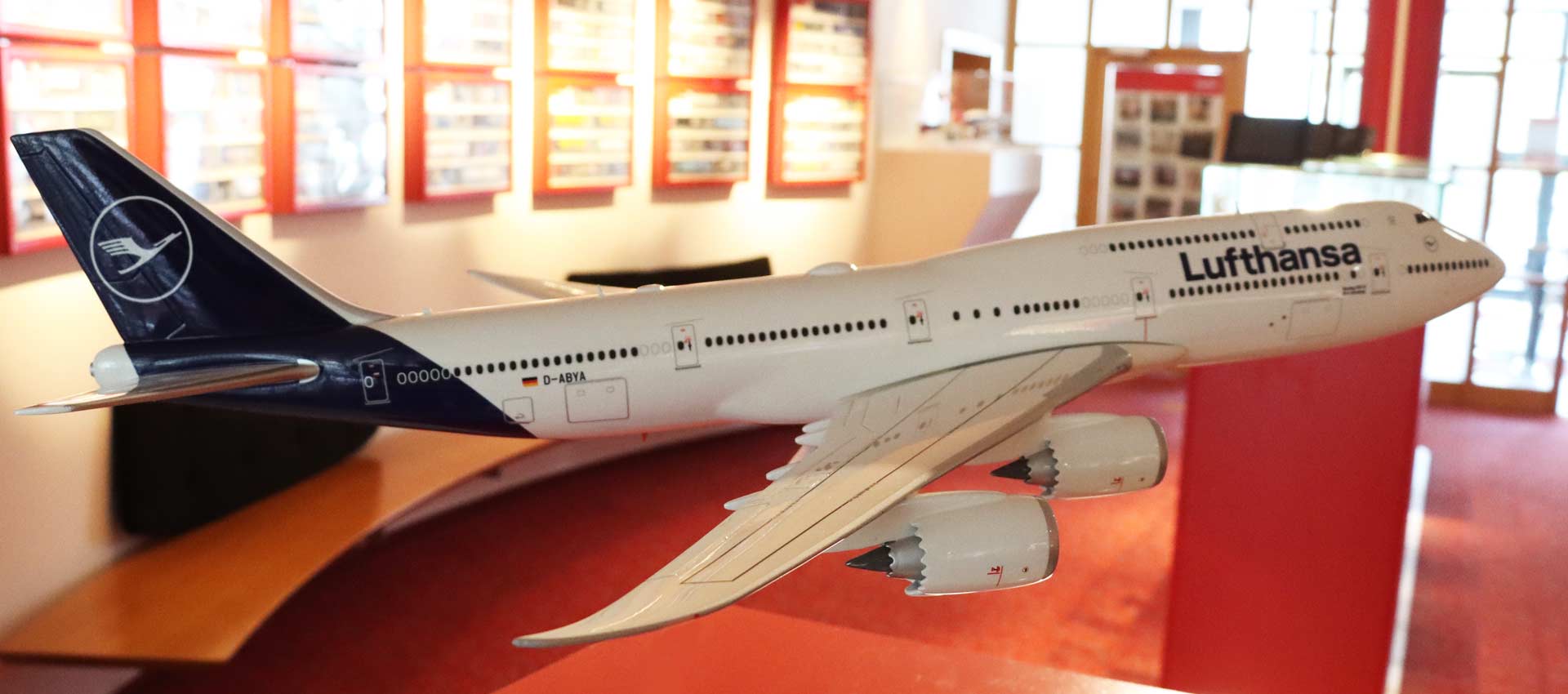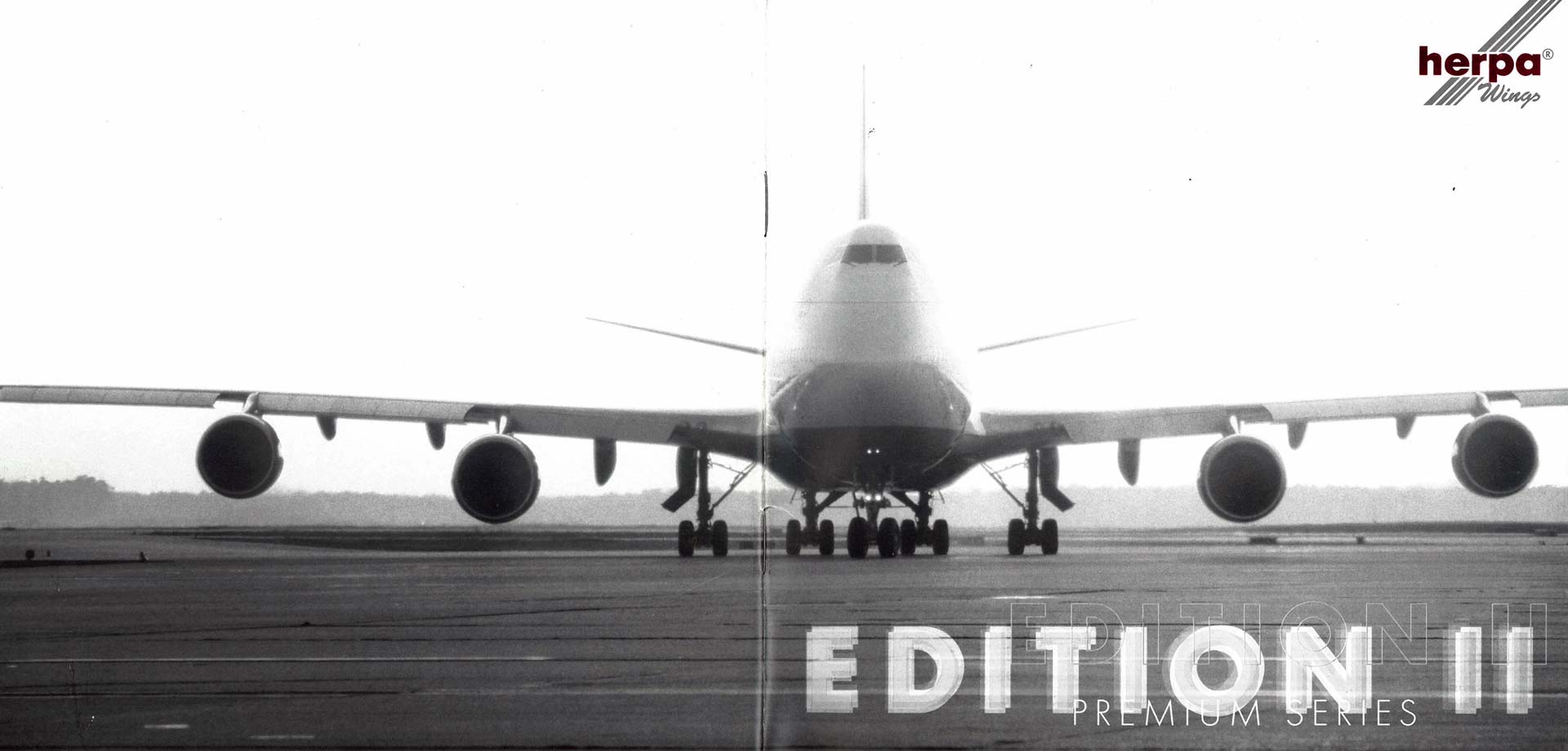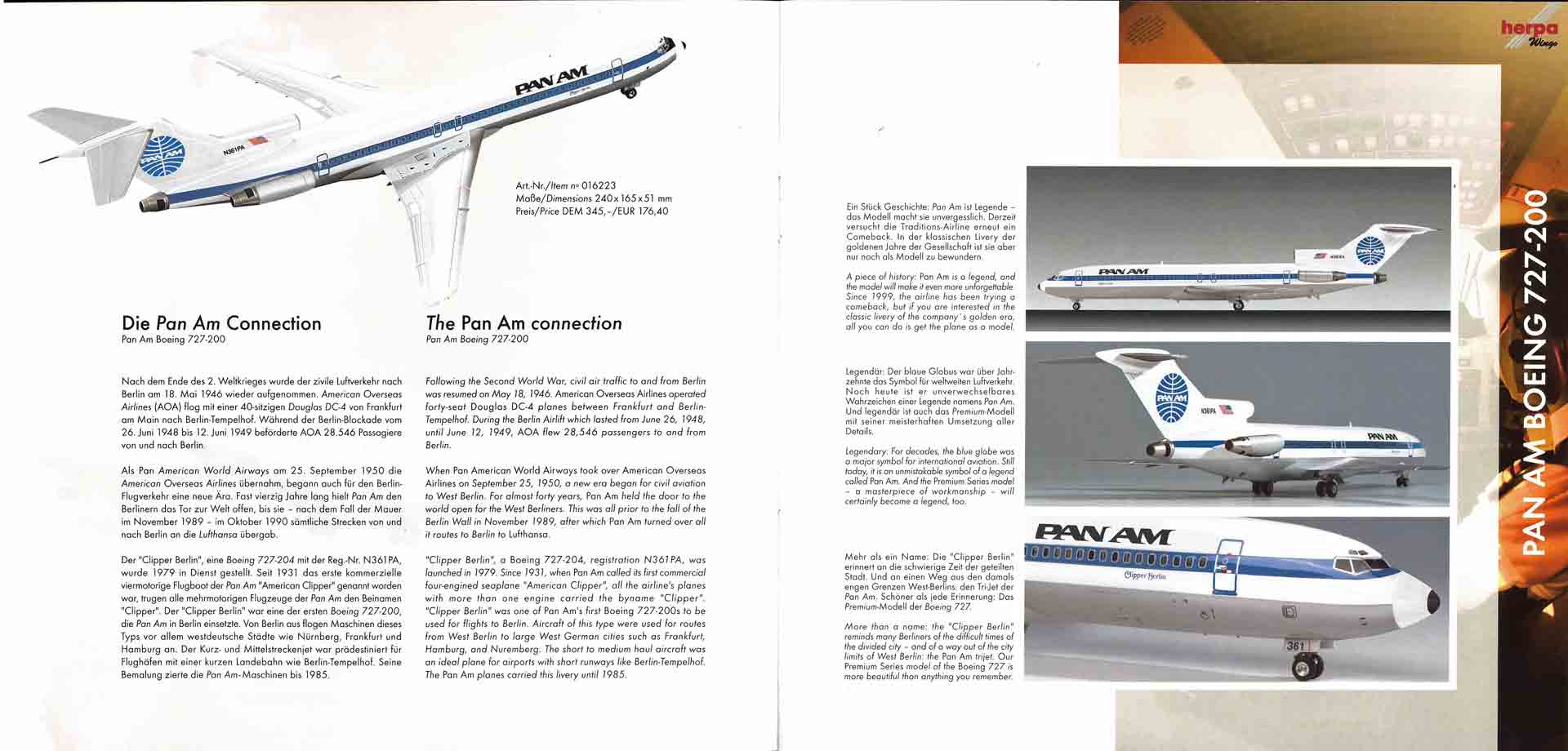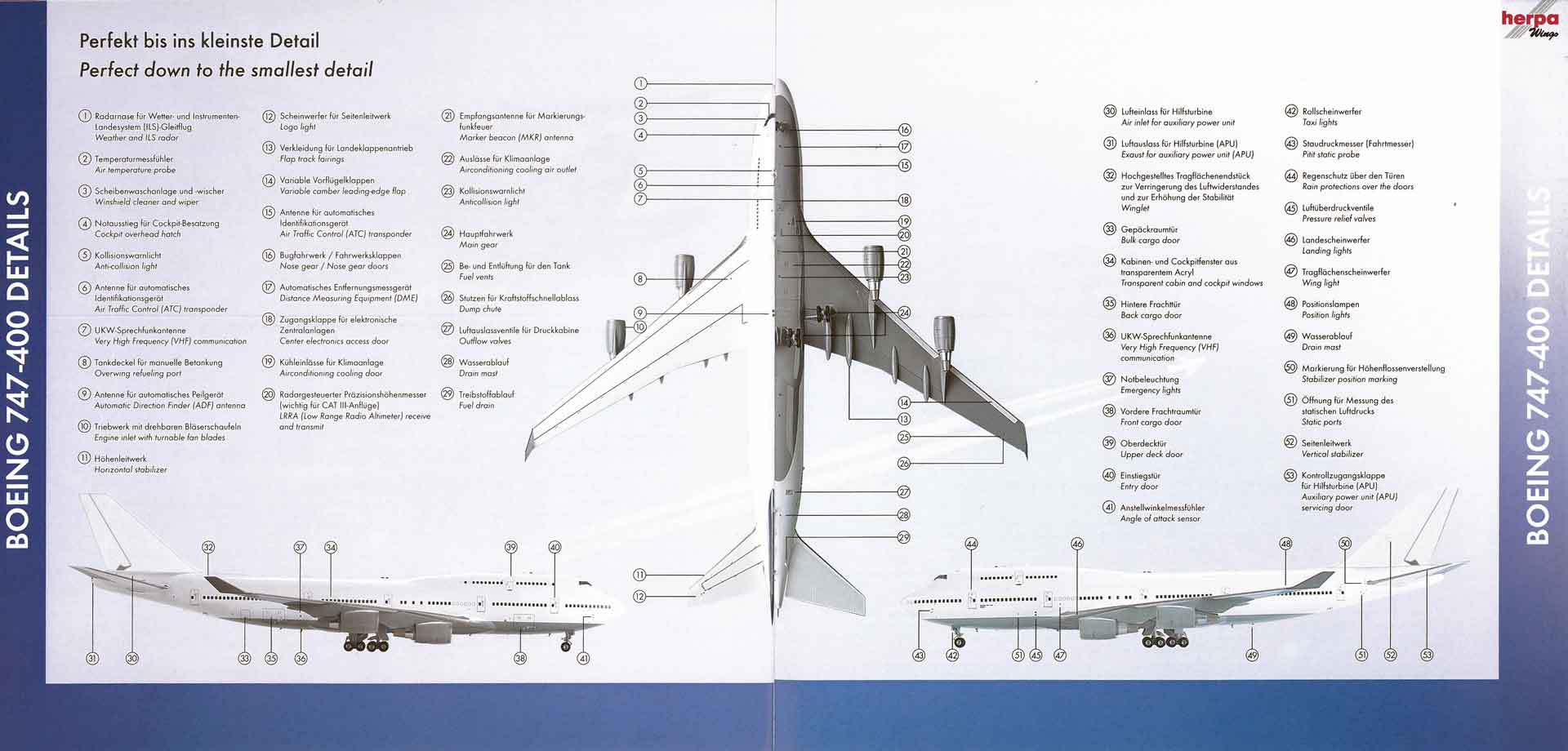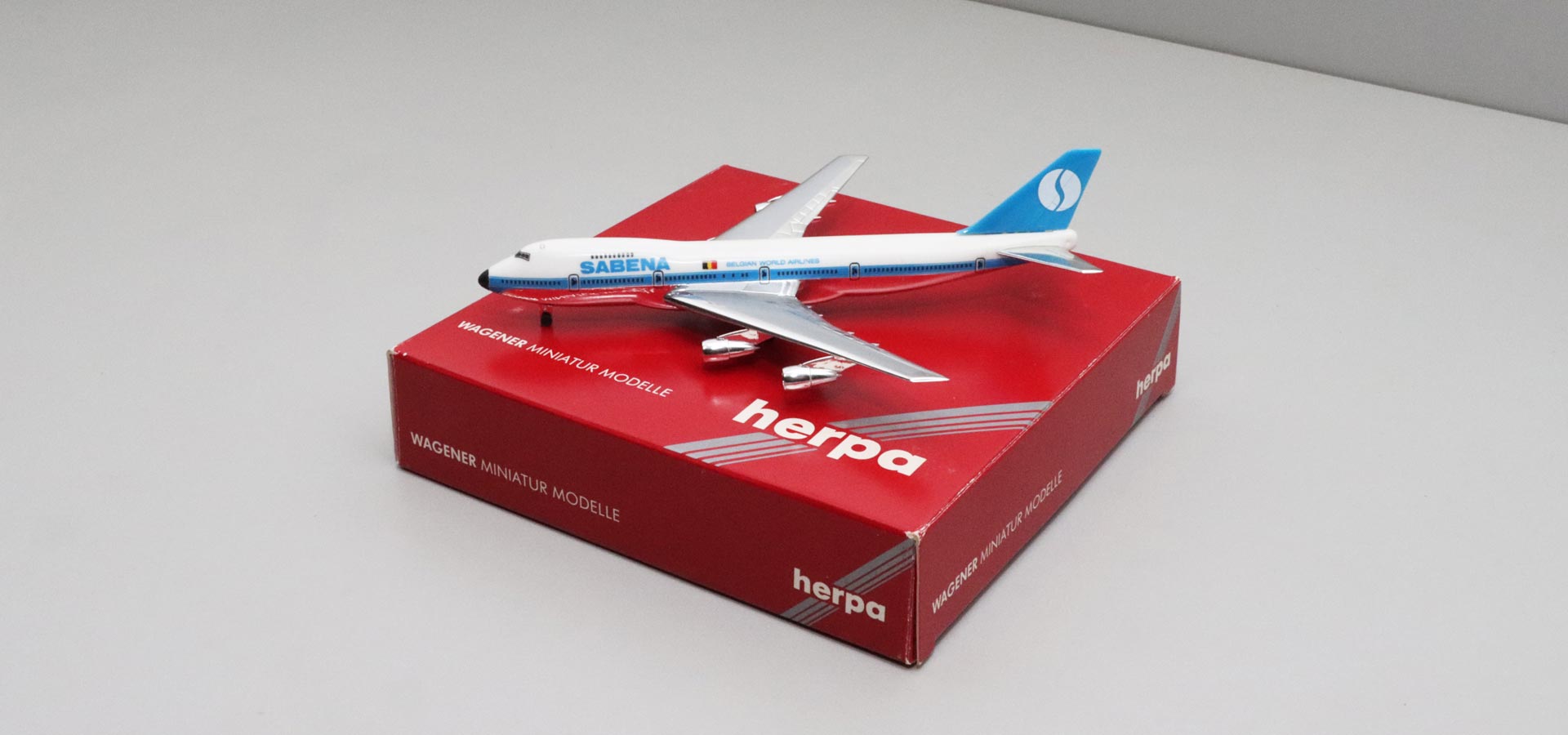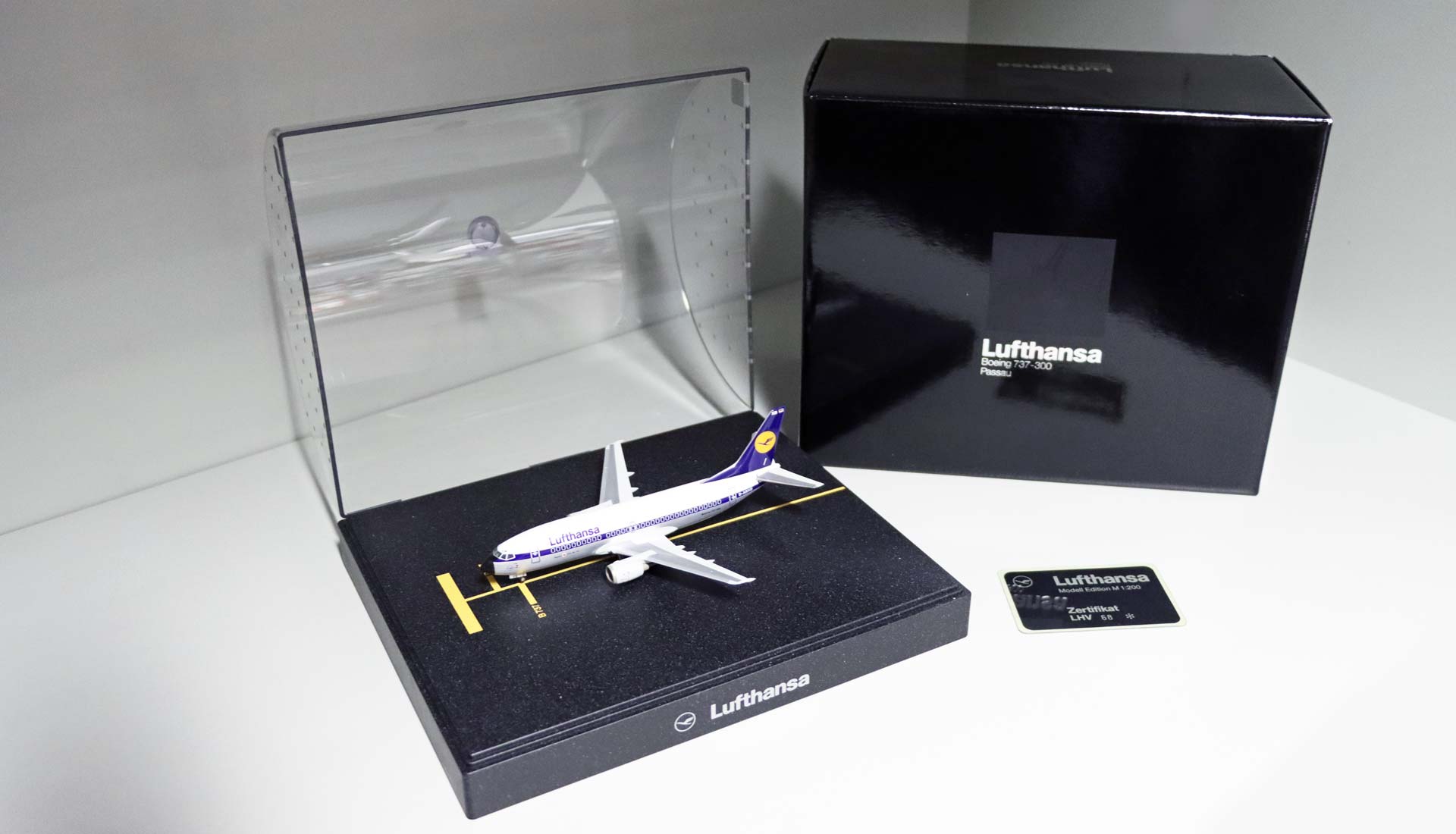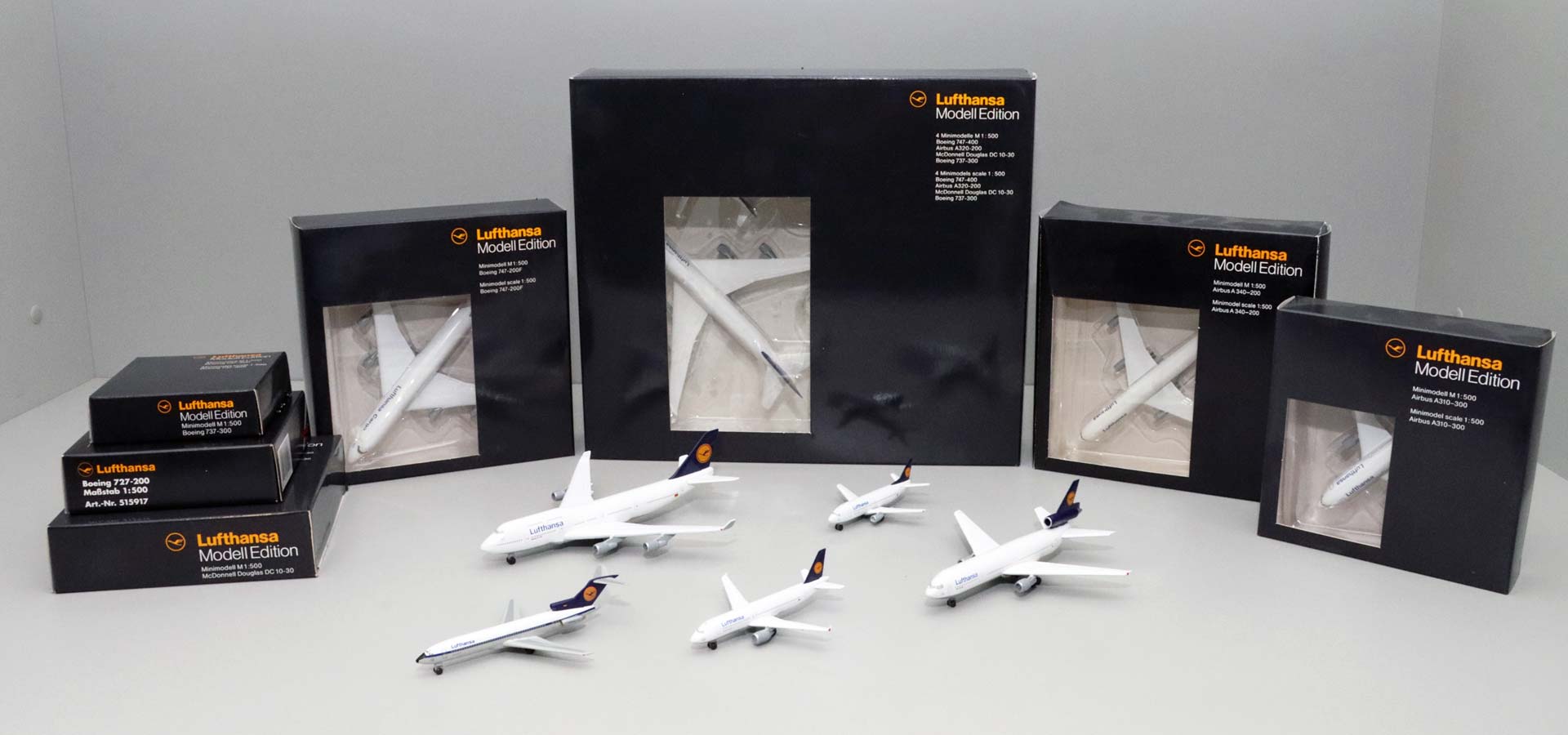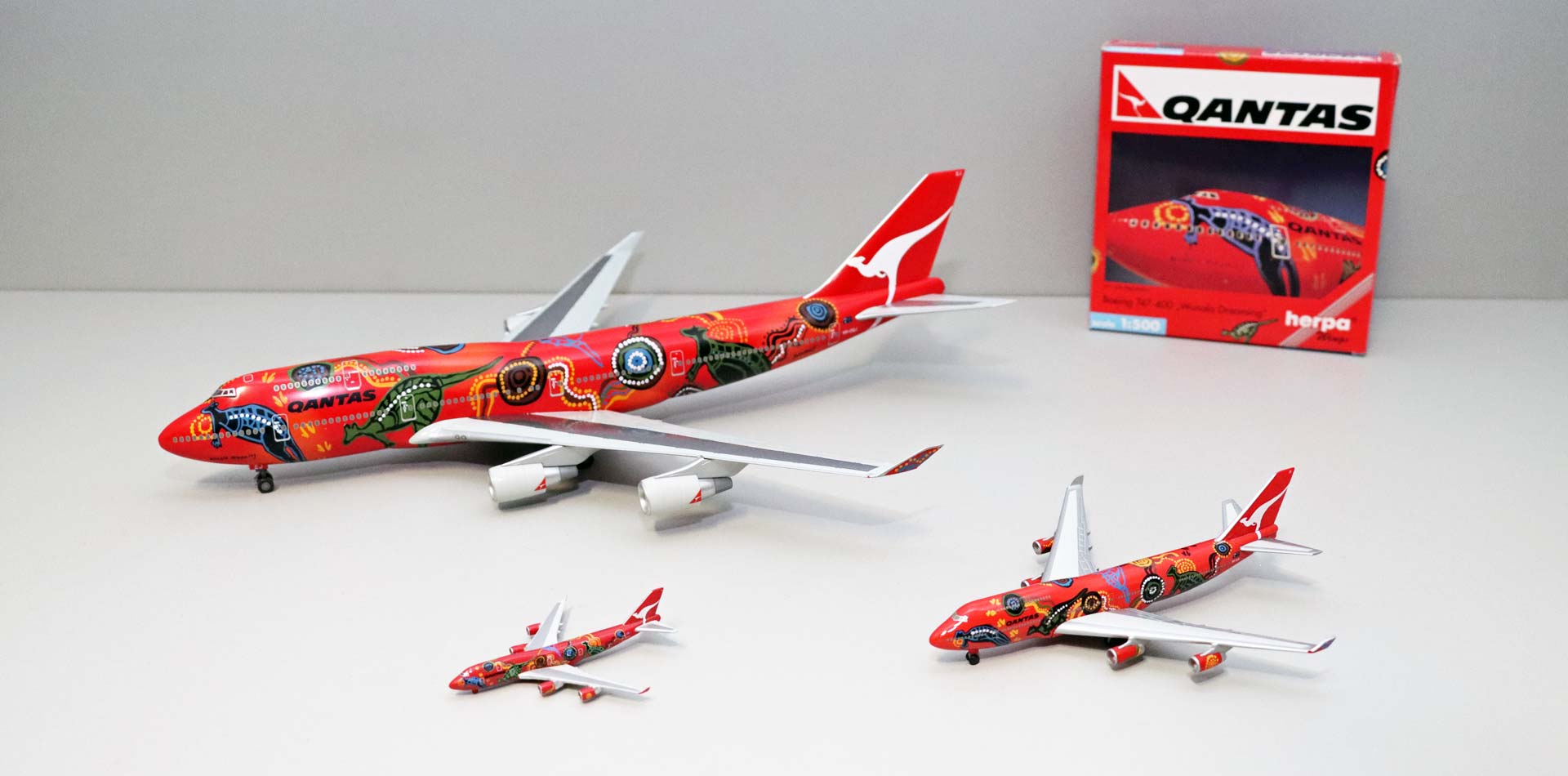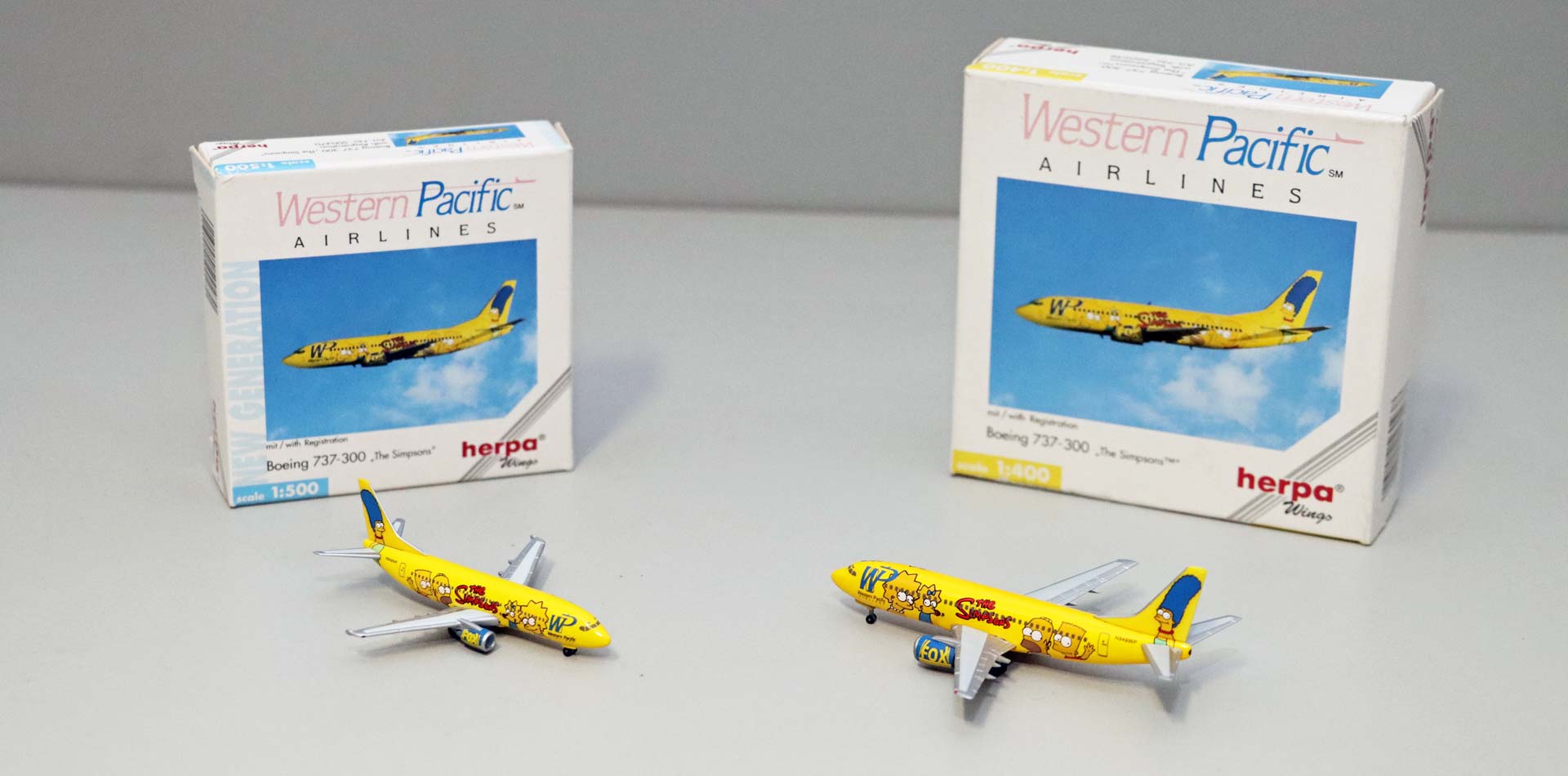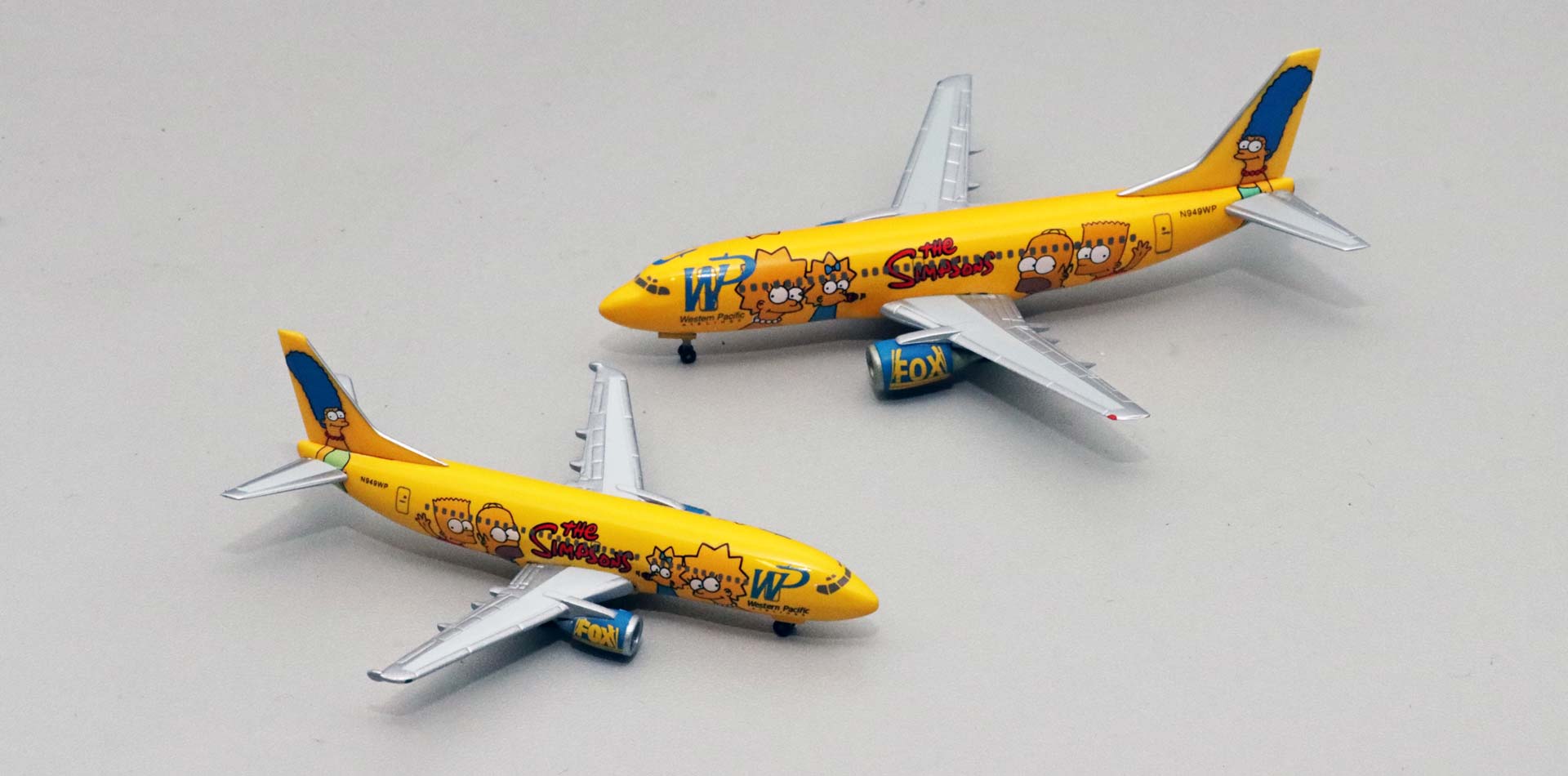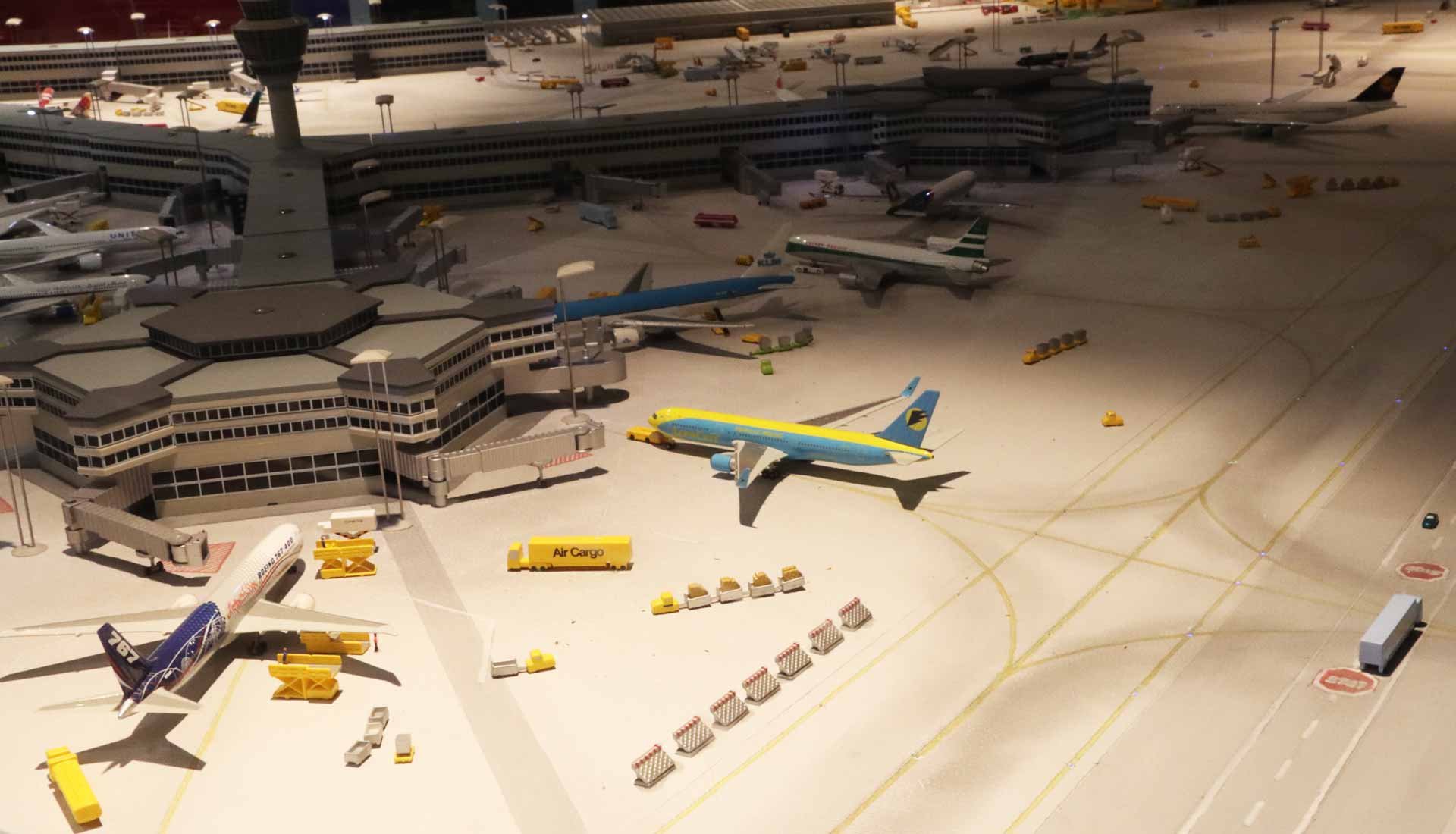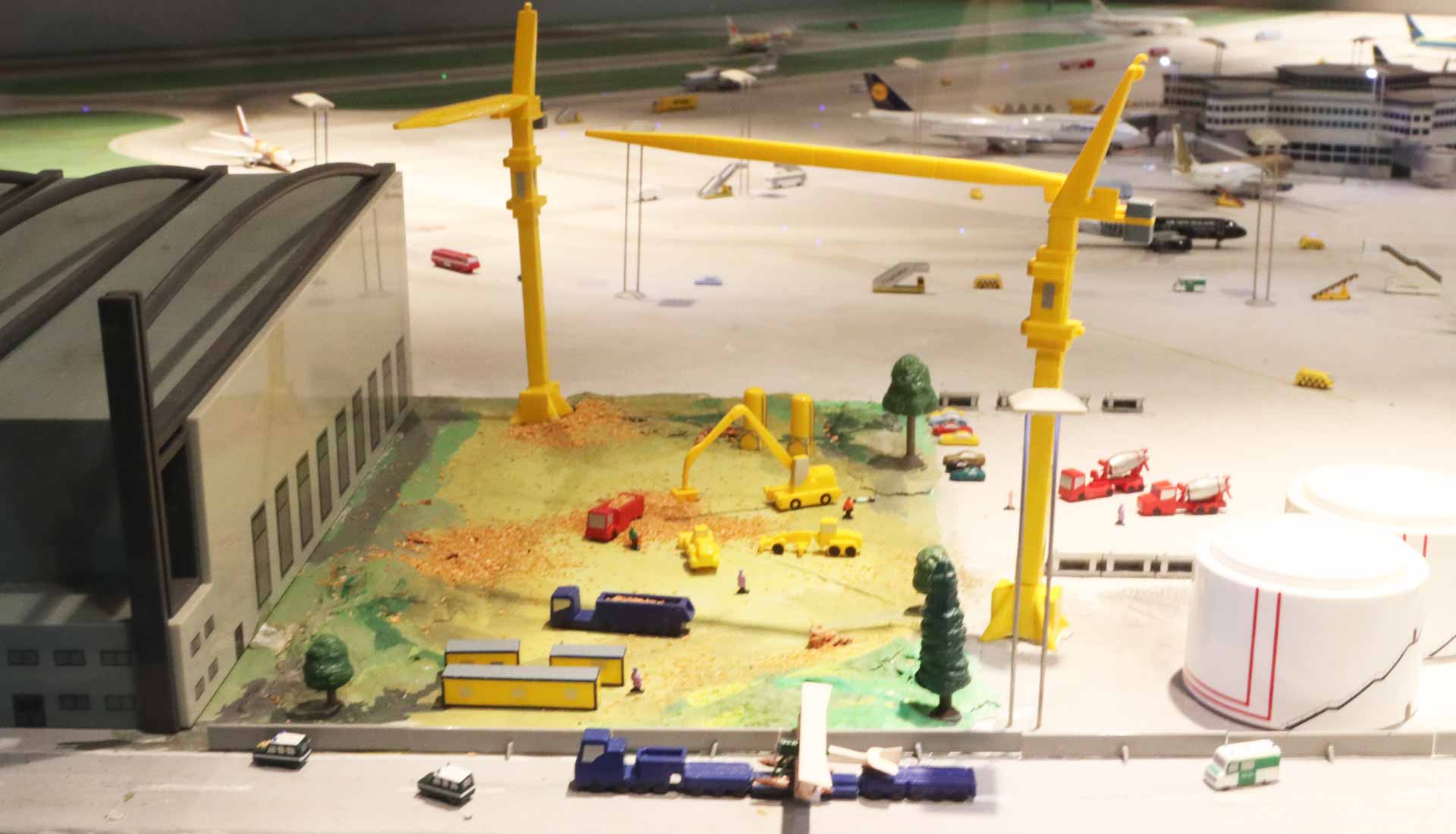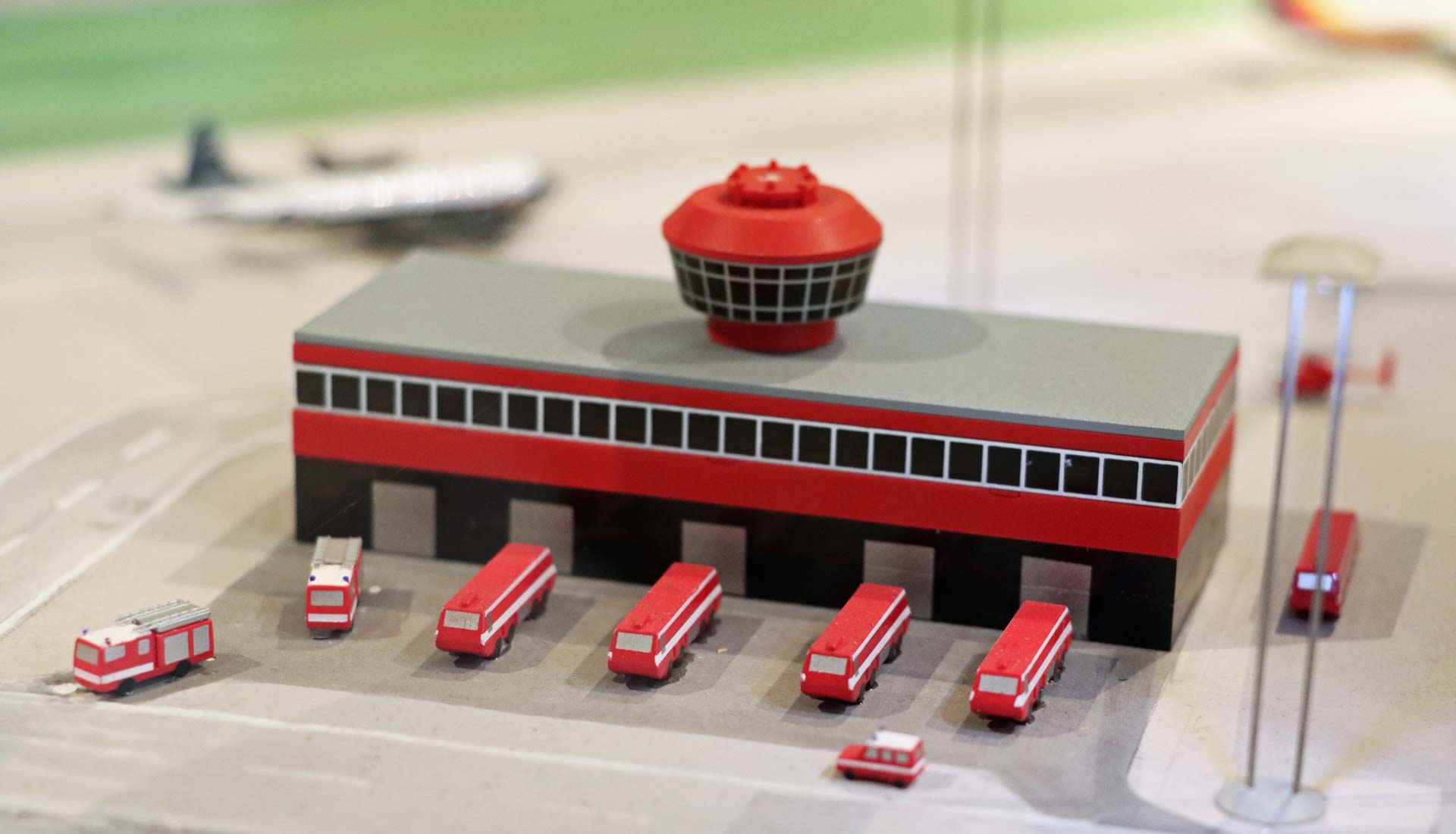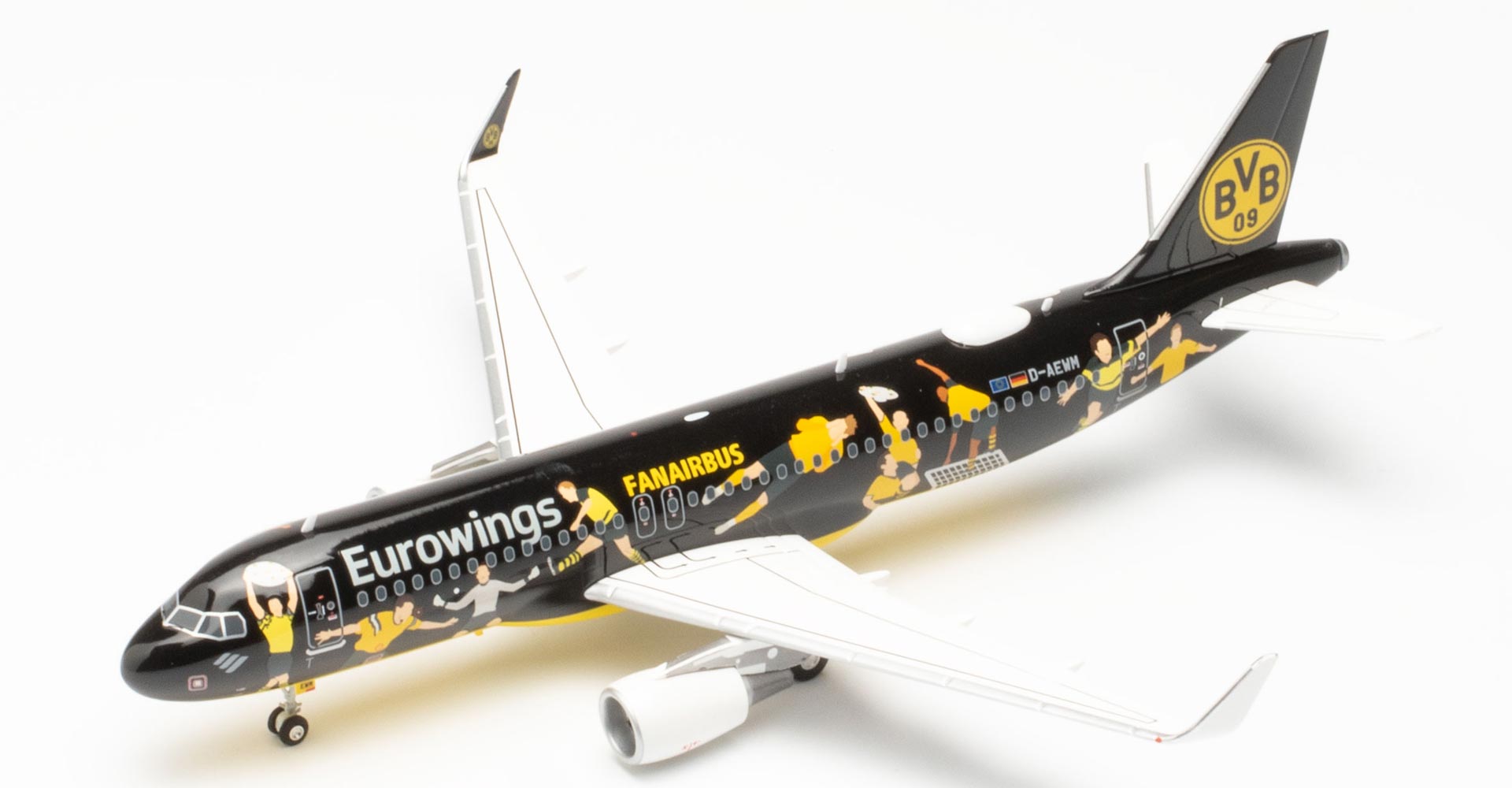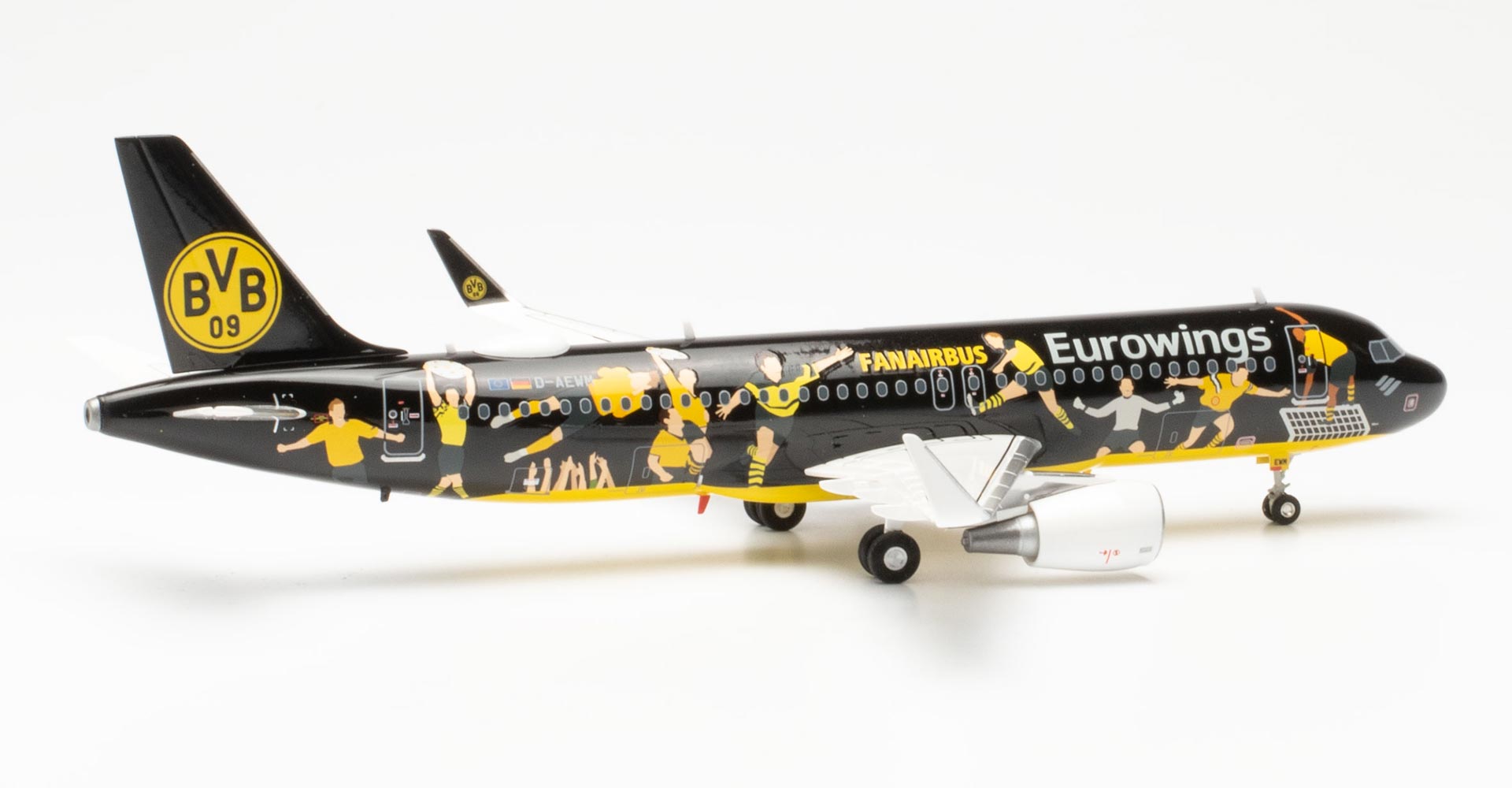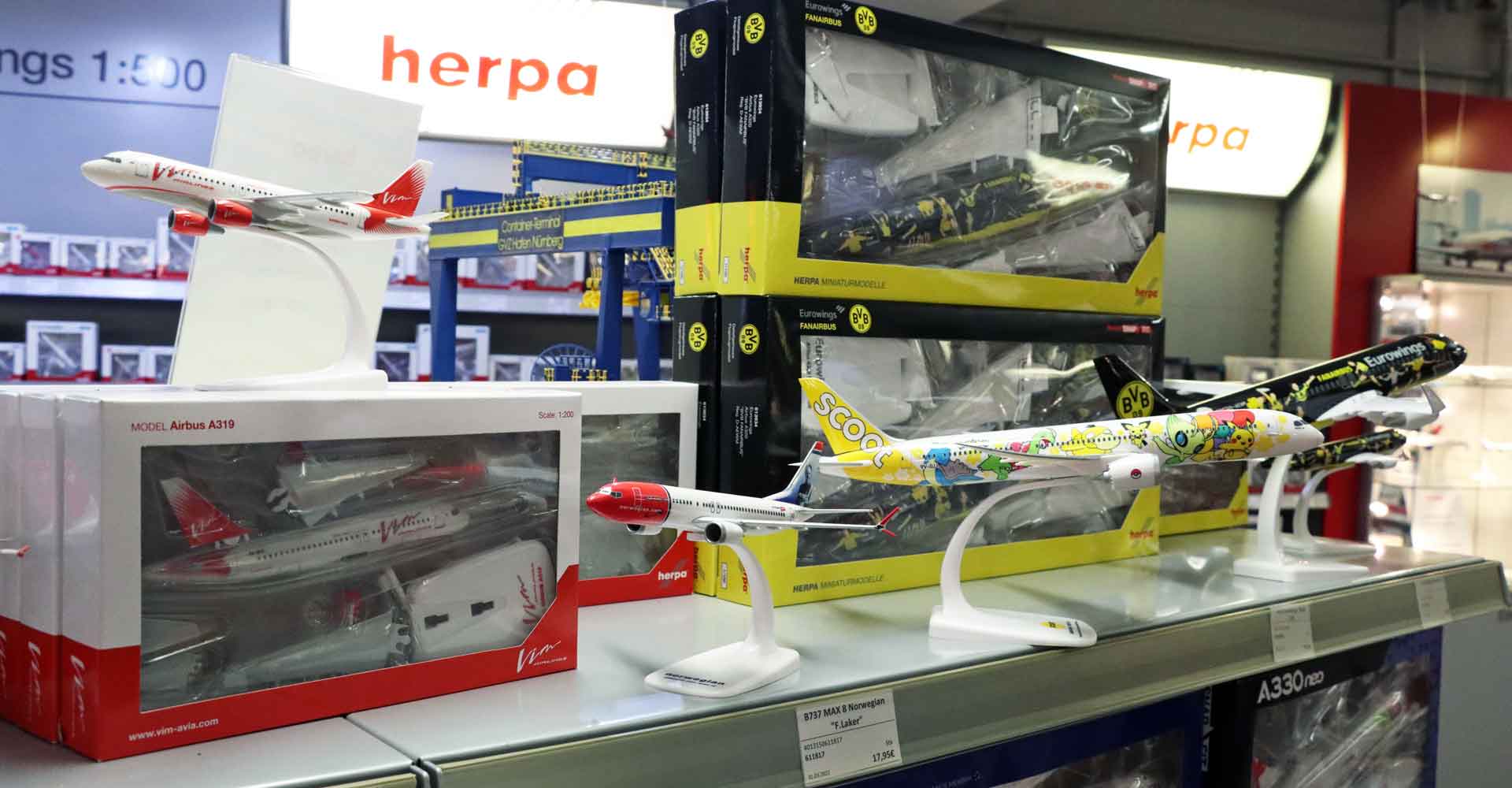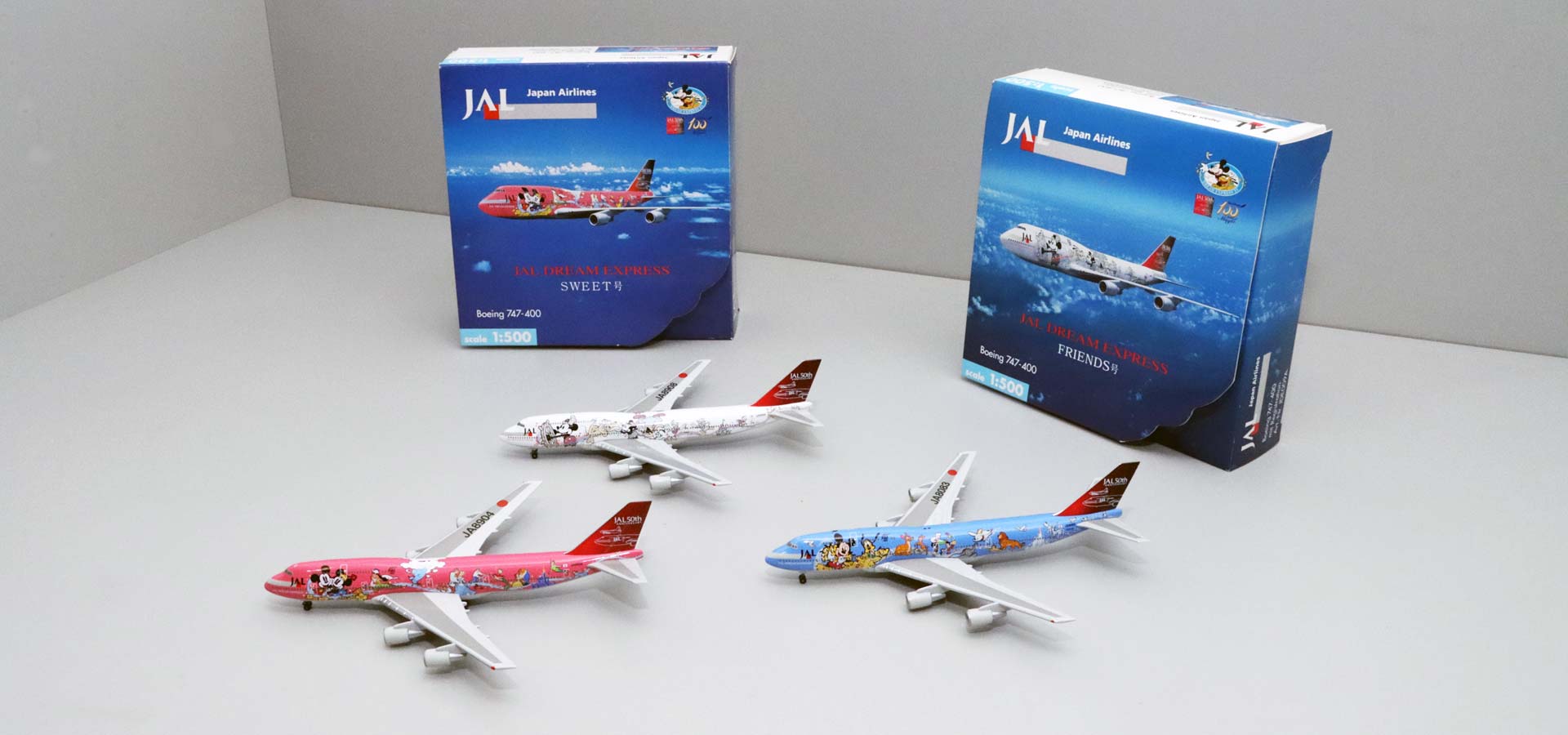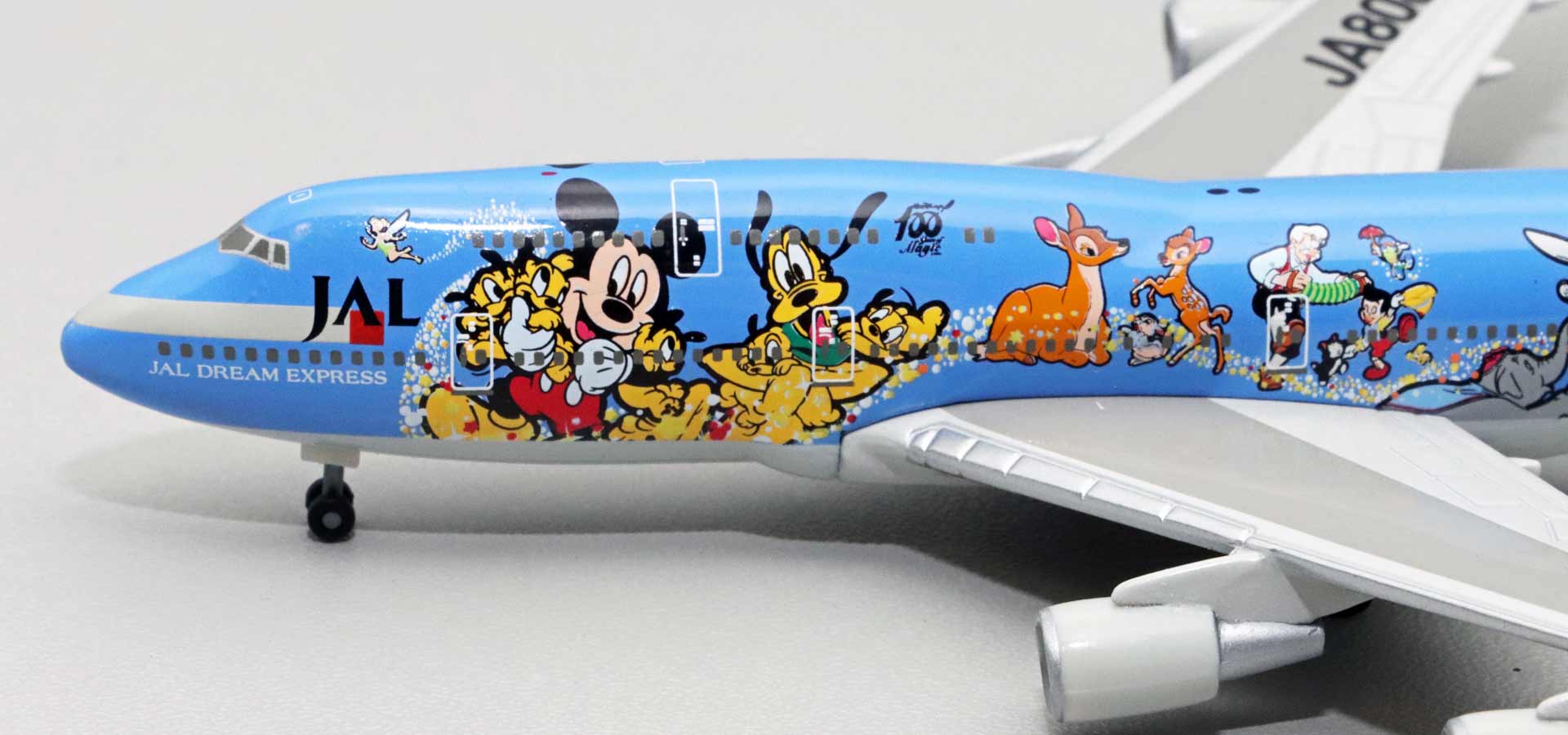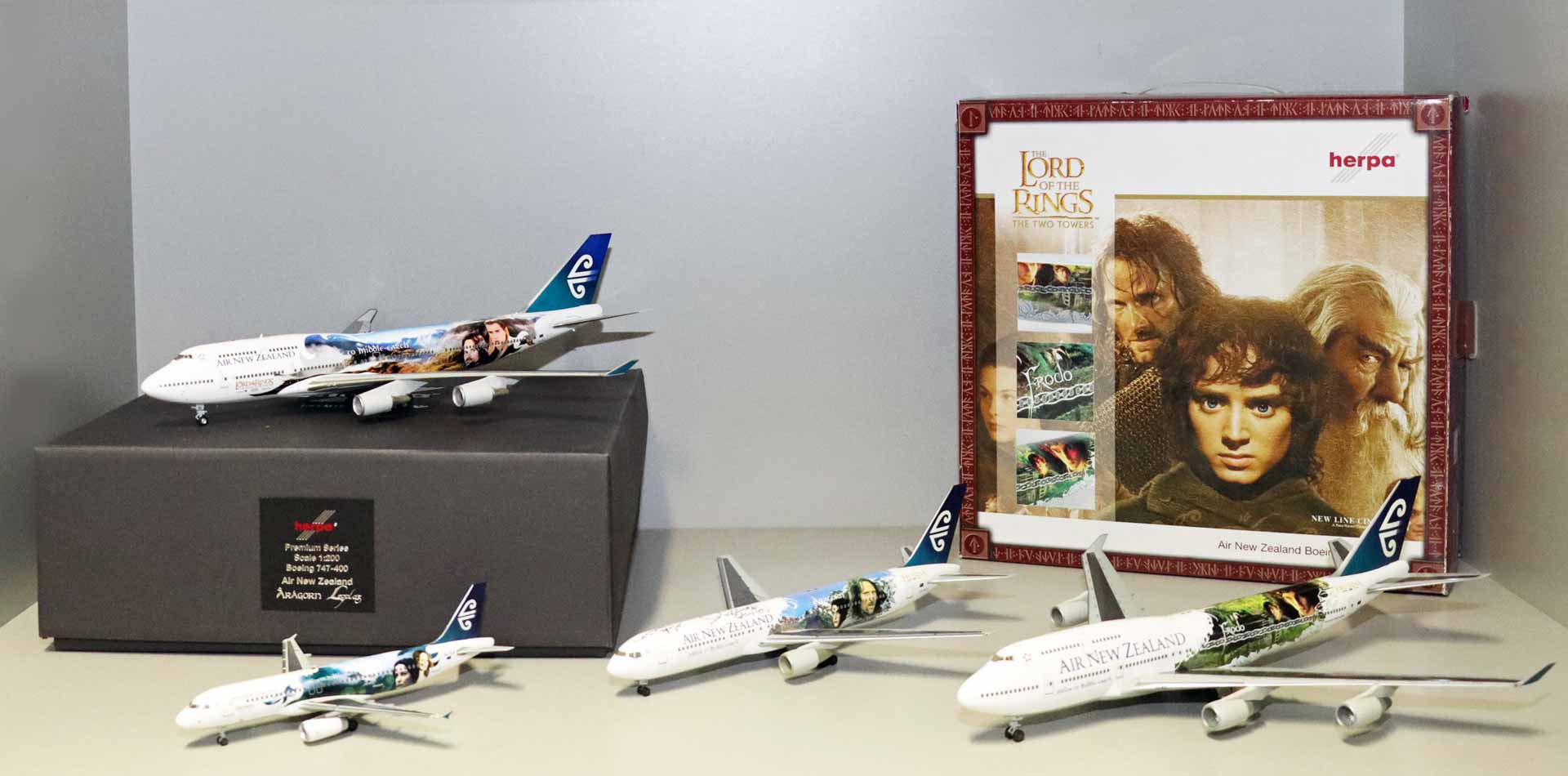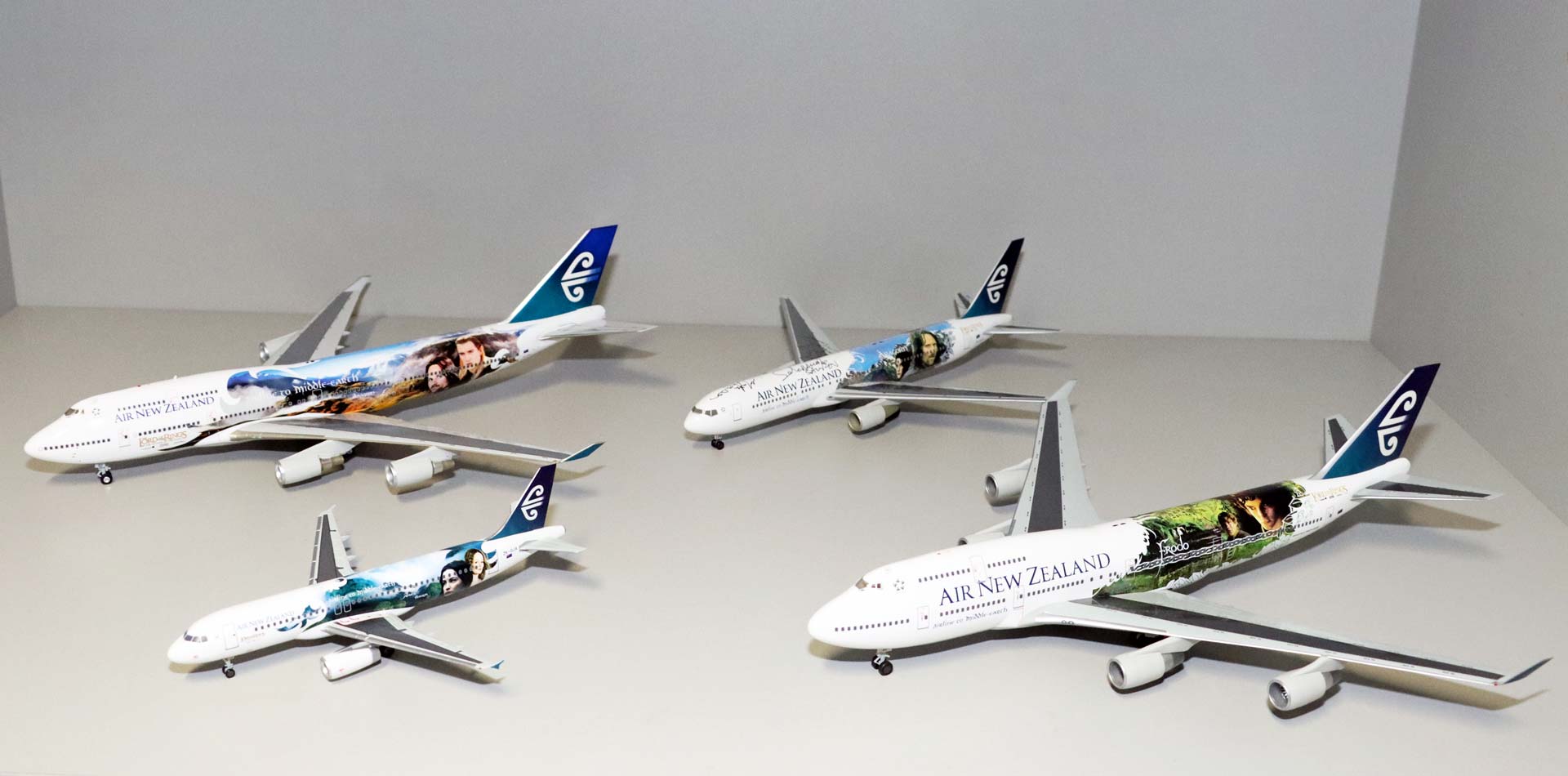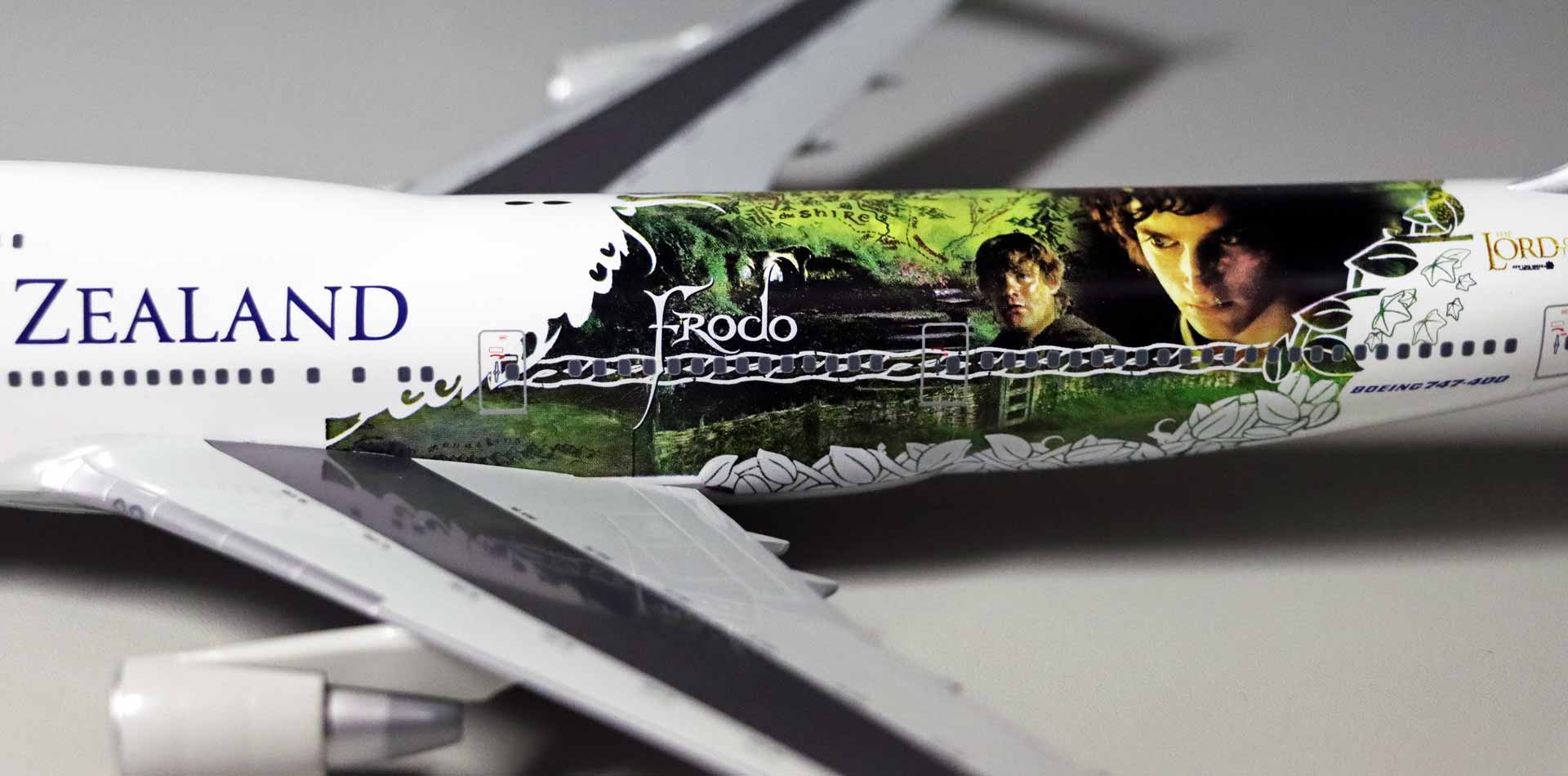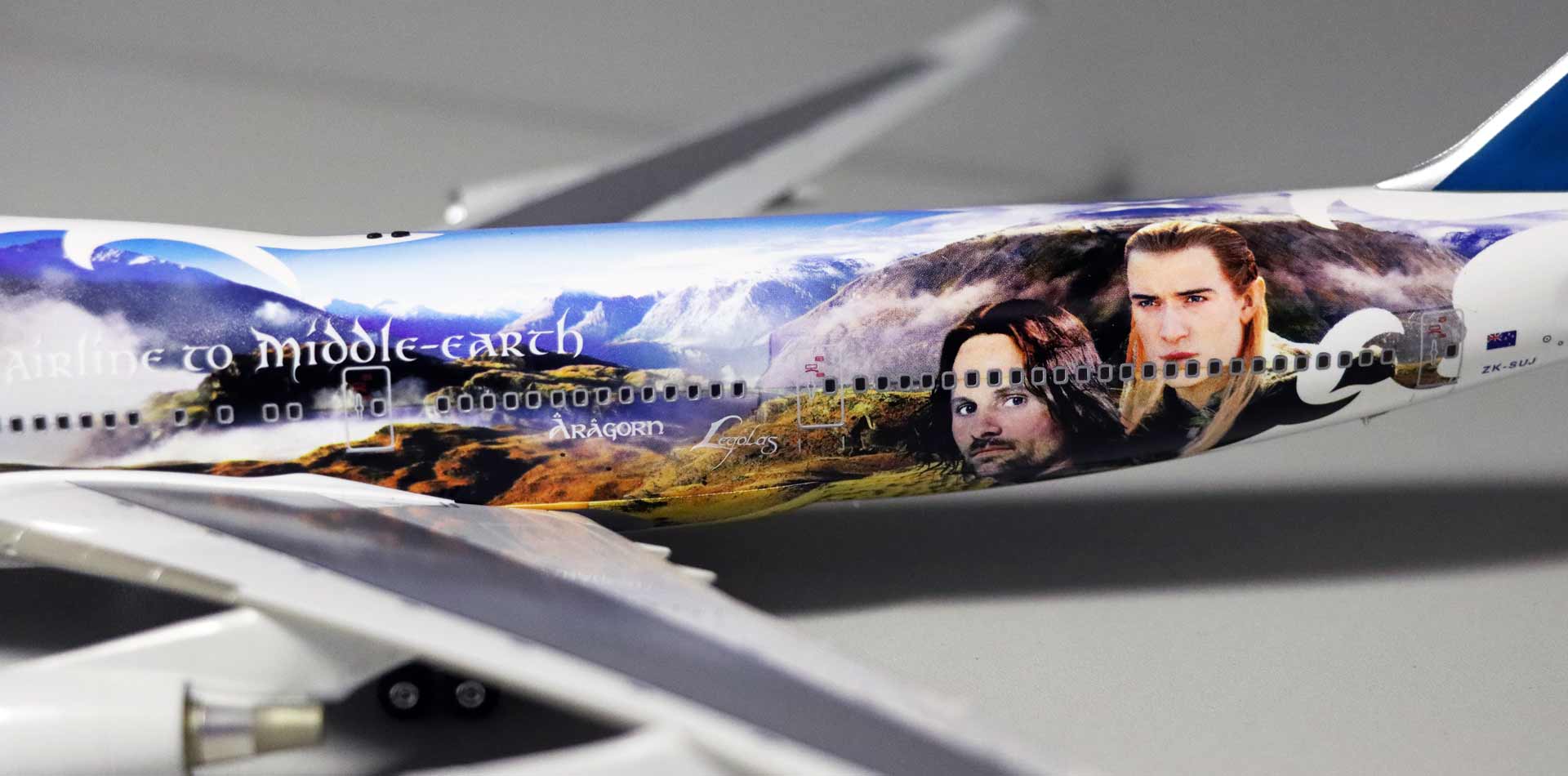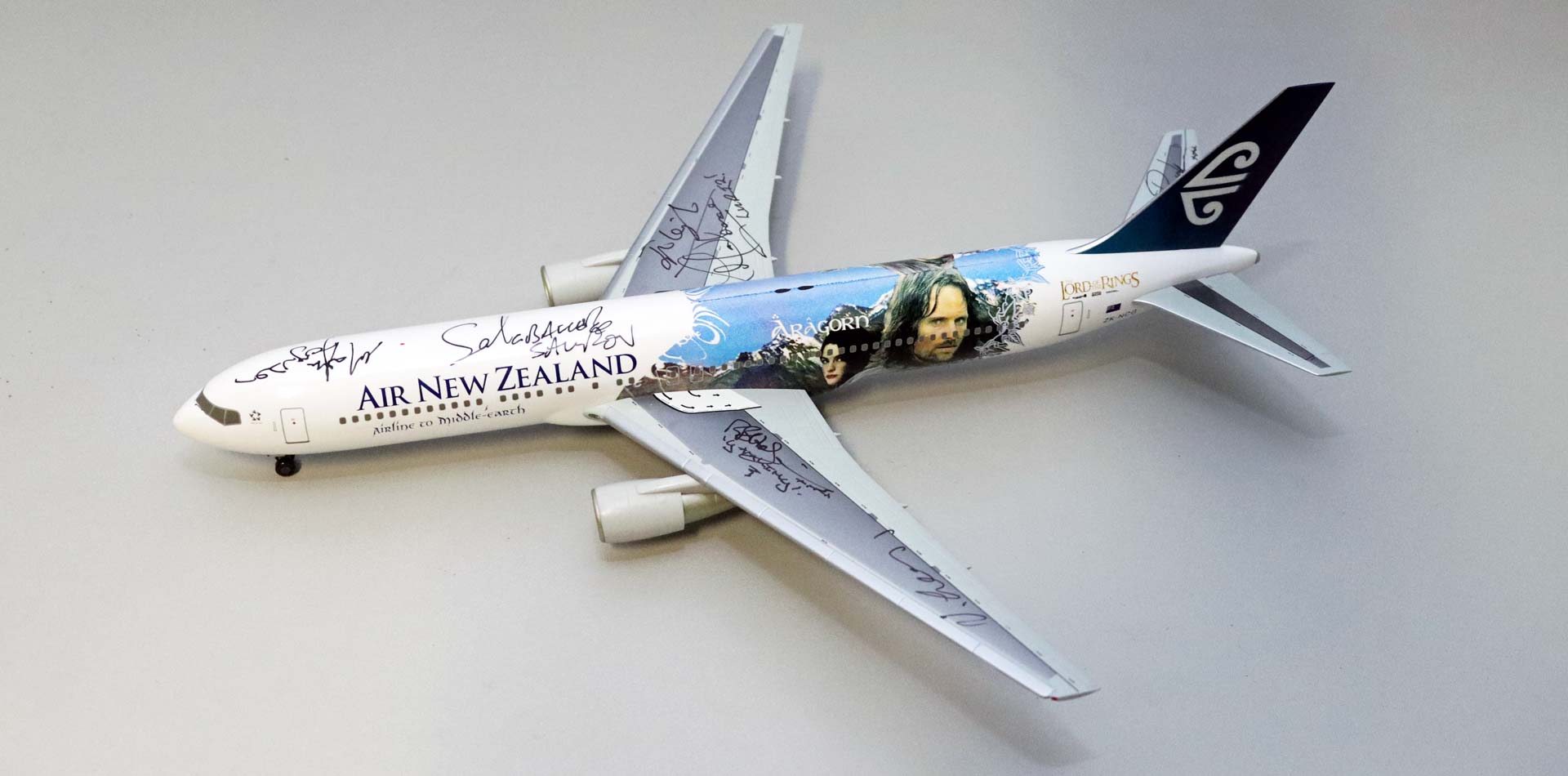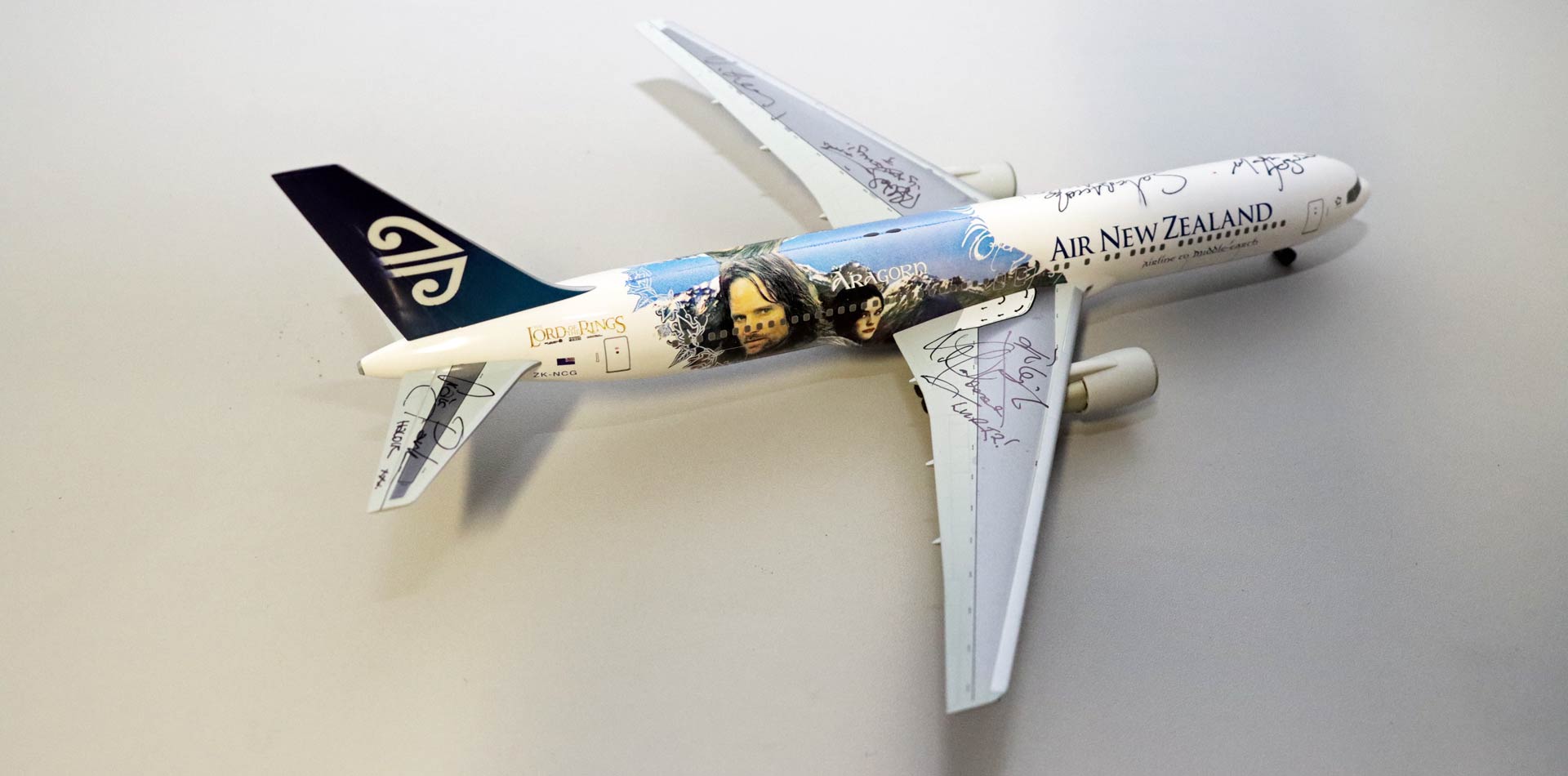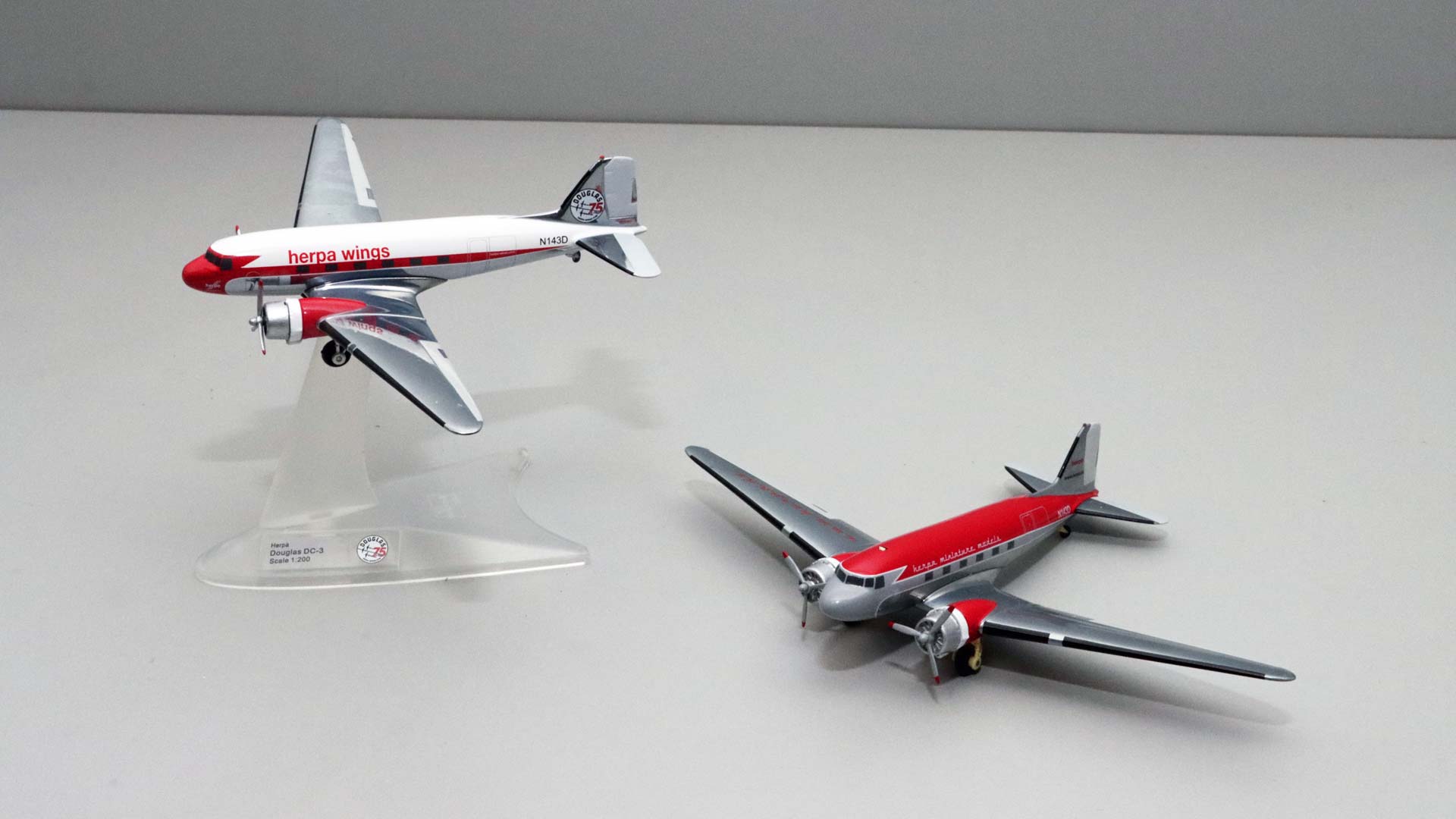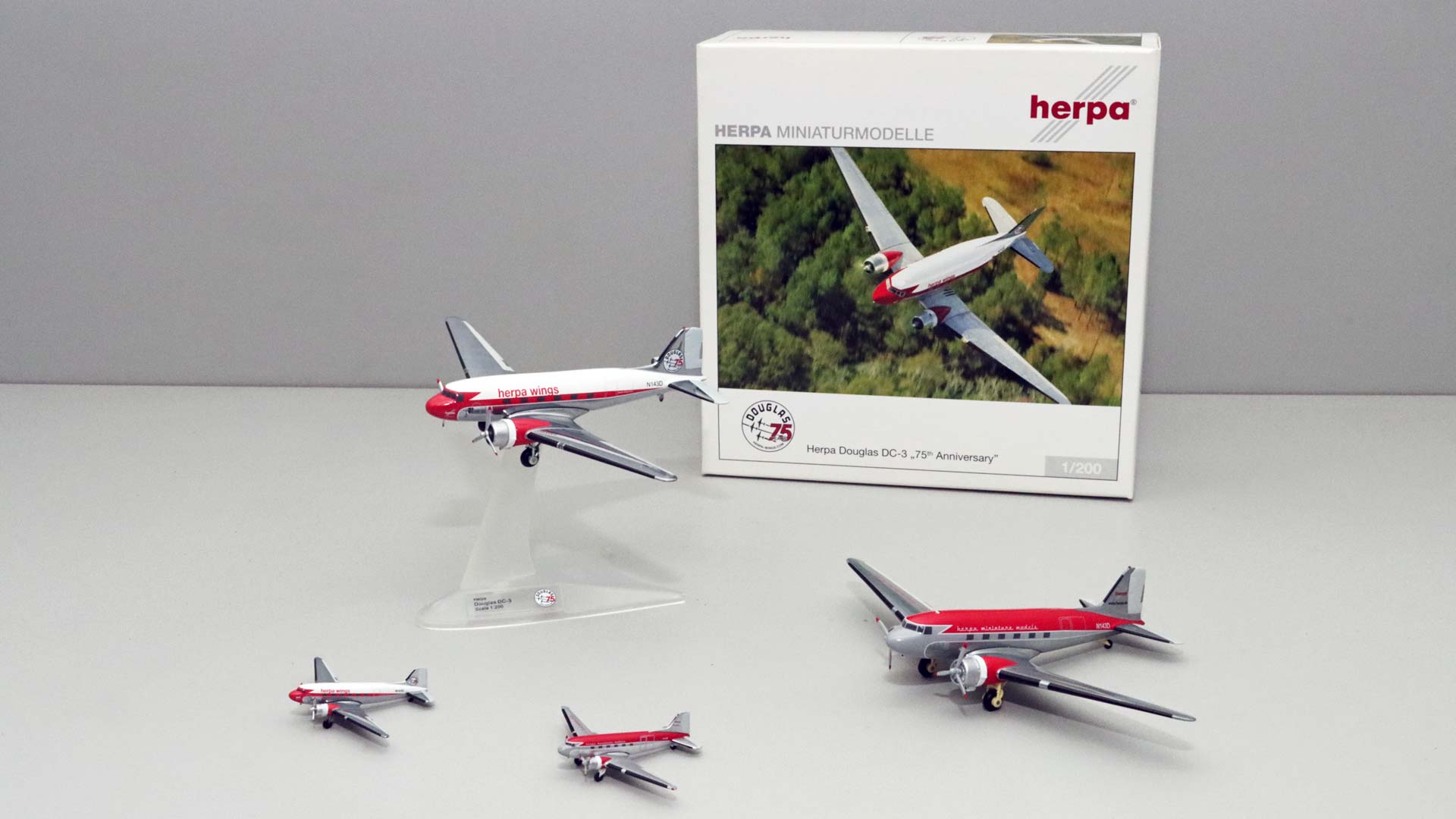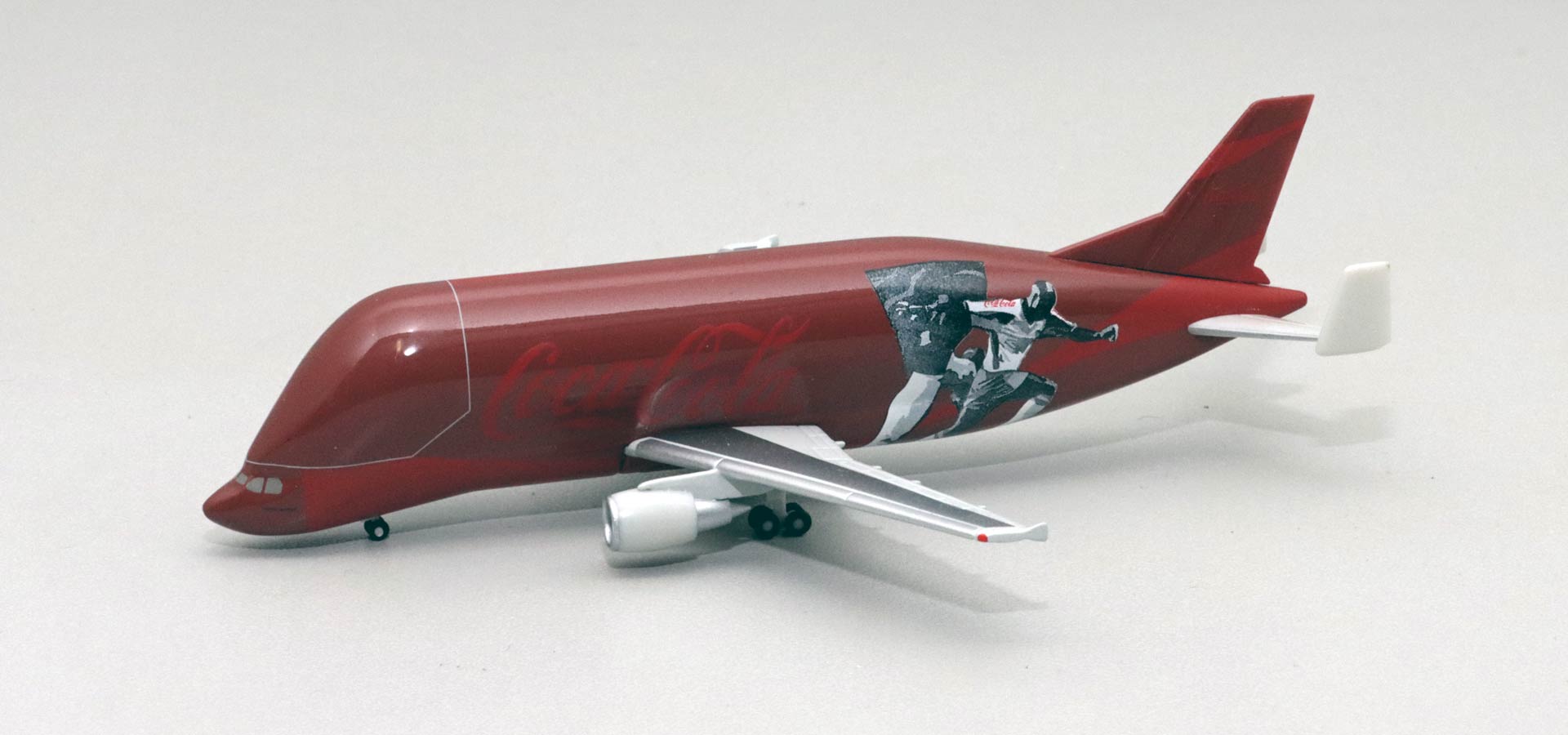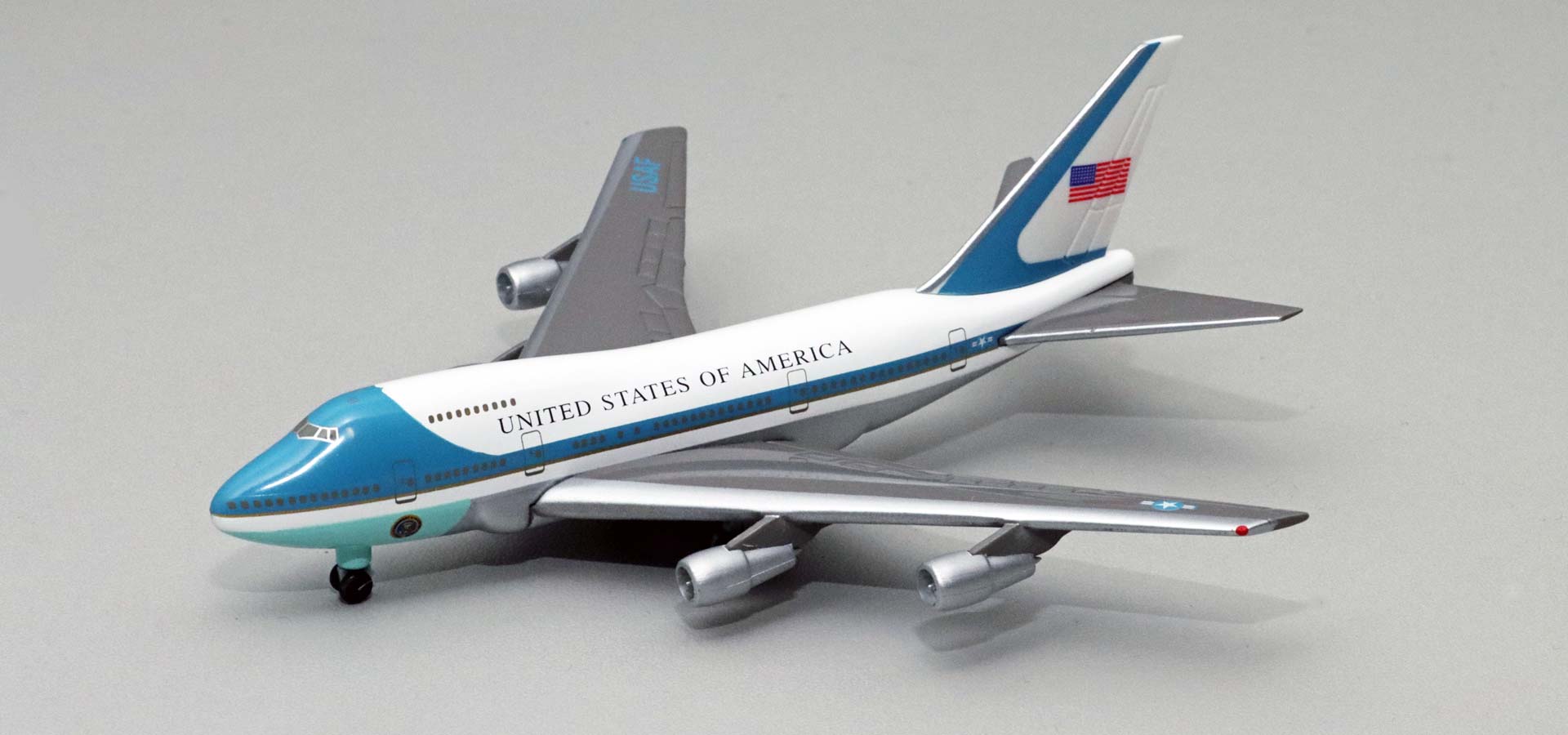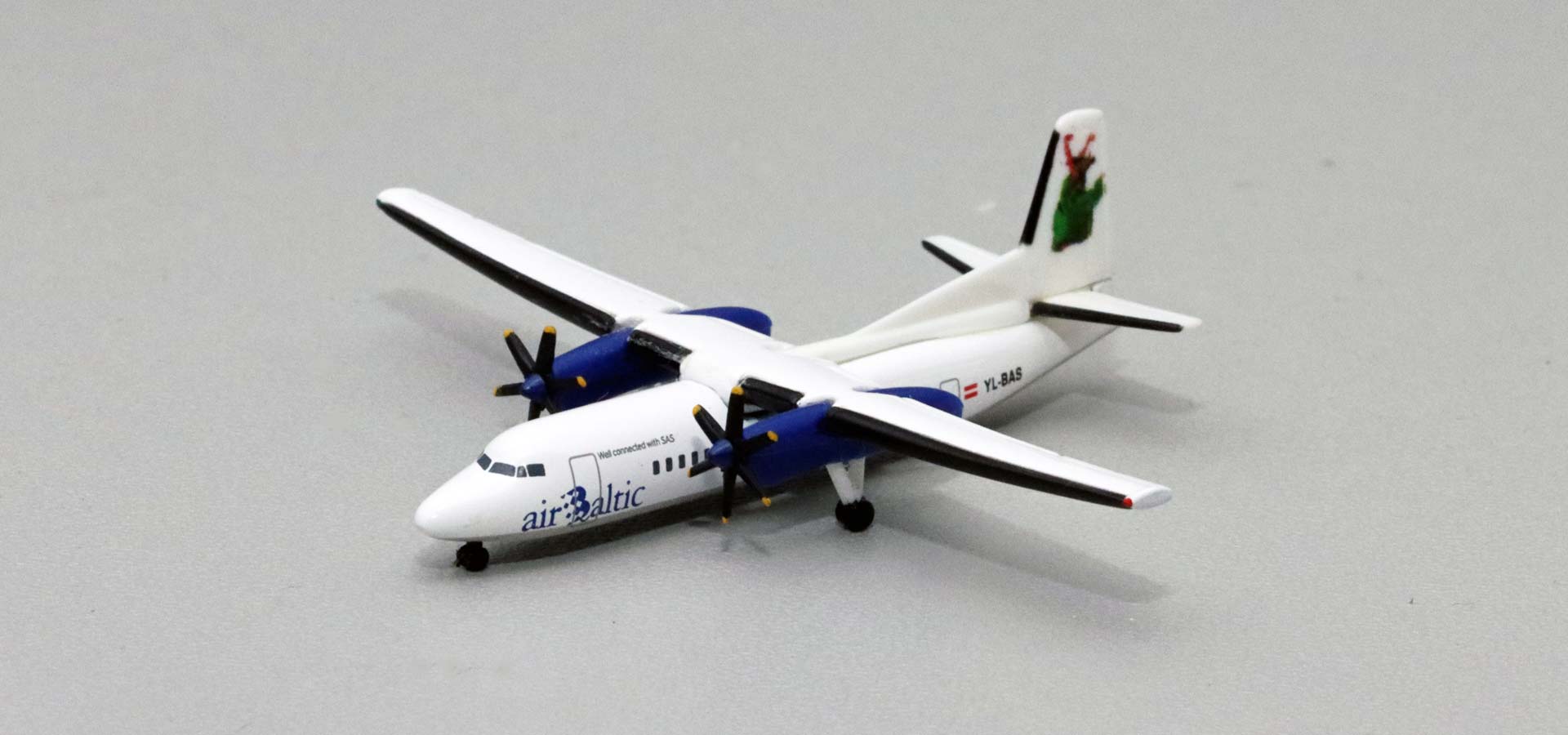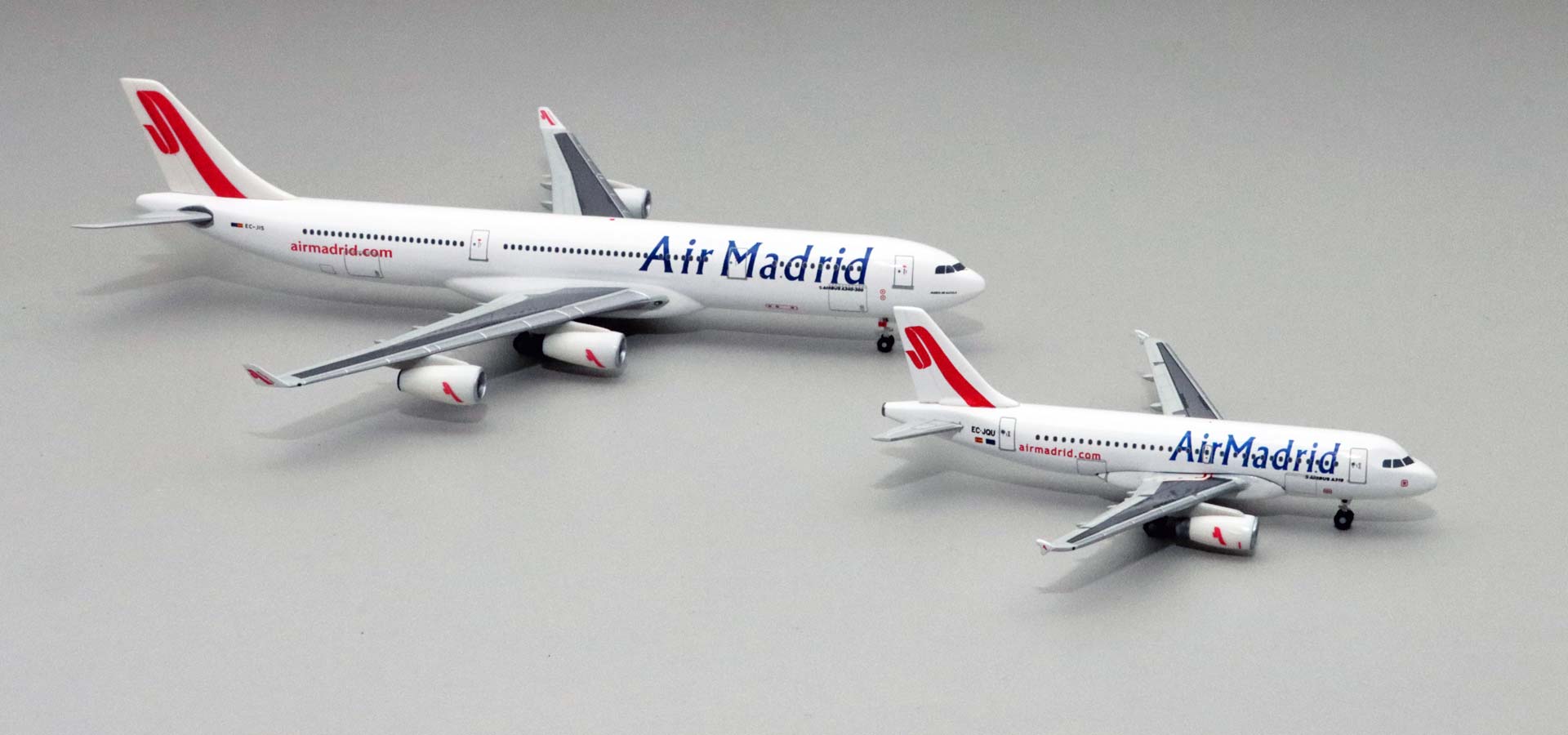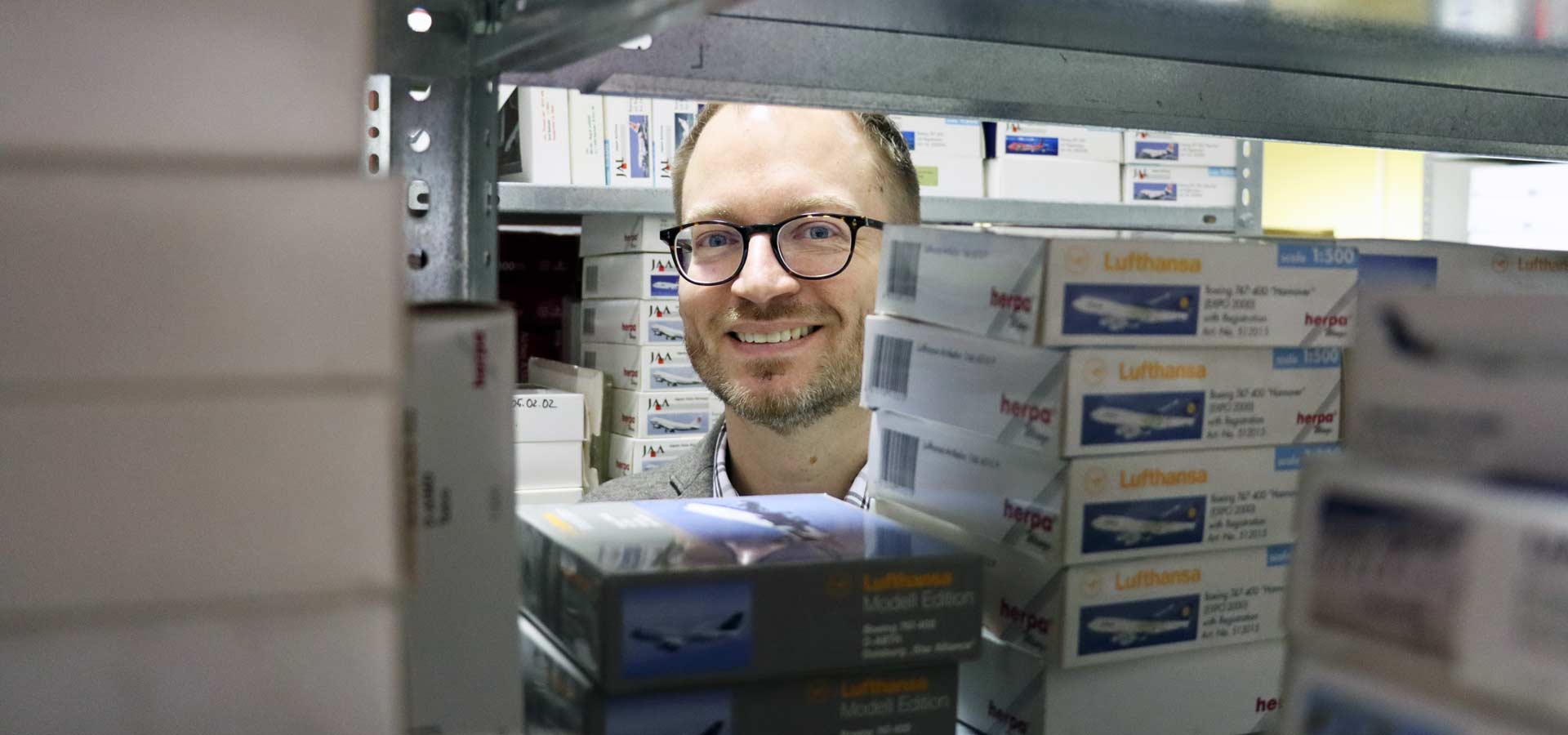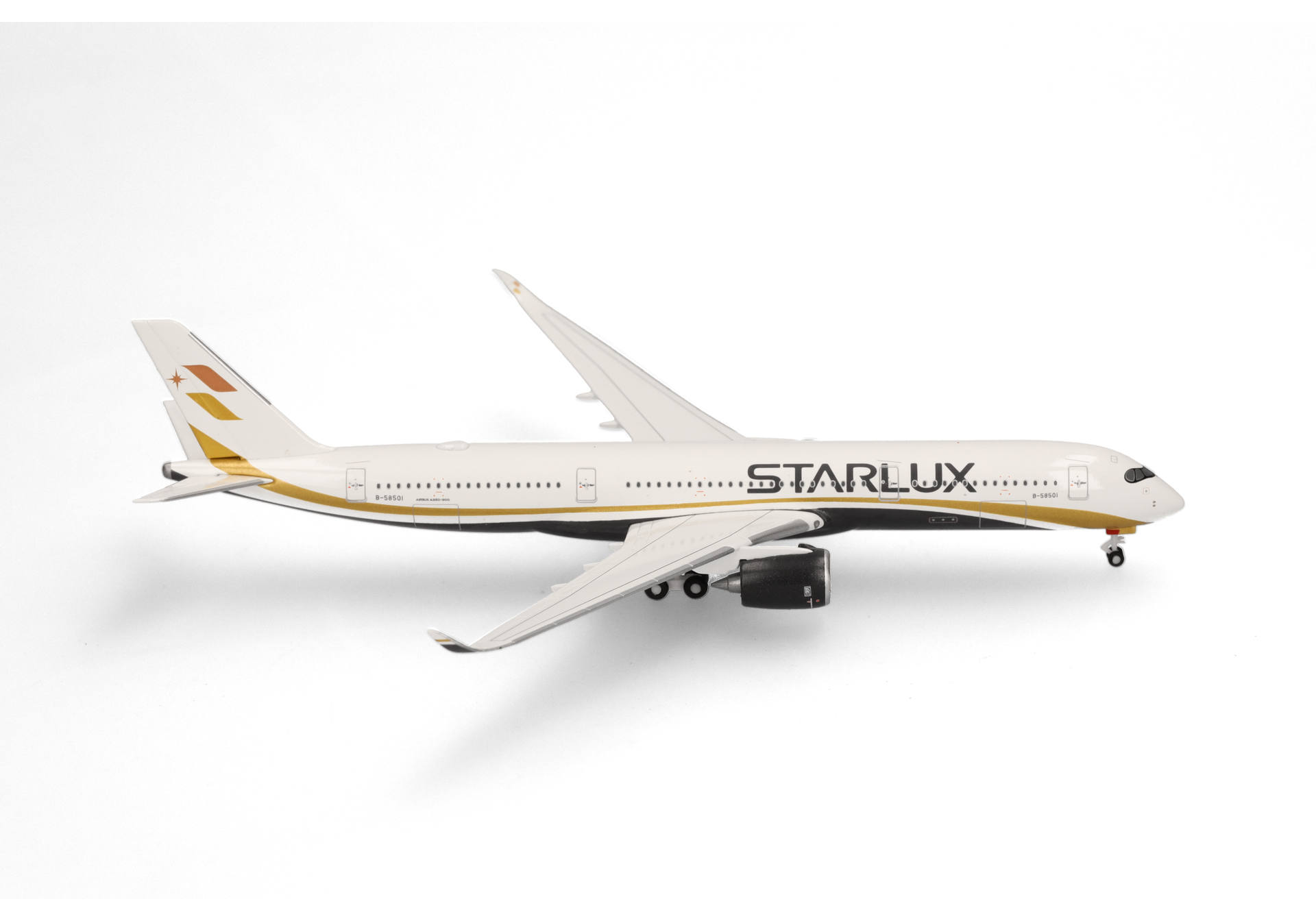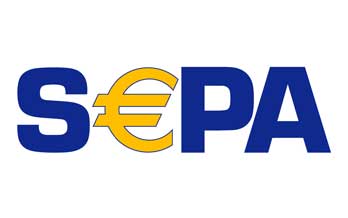New Standards in Model Aircraft Production
In the context of Herpa’s 75-year history, the ”Wings” product division is still relatively young. In 1993, exactly 31 years ago, the first 1:500 scale aircraft models were offered for sale by specialist retailers. In fact, the then owner and Managing Director Claus Wagener had already been inspired by the idea of letting Herpa models grow some wings a few years earlier. At the end of the 1980s, Germany’s Lufthansa finally gave the impetus for the take-off of aircraft models with its first order. This ended up earning Herpa fame worldwide.
Above all, it was the precise printing of even the smallest corners and curves using the high-quality pad printing process that took the Franconian company to the top of the market in the 1:87 scale model vehicle segment in the 1980s. Claus Wagener, one of the two managing directors and owners of the company at the time, was an aircraft enthusiast and had been toying with the idea of taking the step from the diorama line to the miniature taxiway for some time. “In 1986, I had the idea that we could do something more than cars,” recalls the graduate engineer. “I knew that with our technical capabilities, we could easily realize innovative, high-quality printing on aircraft models as well.”
The timing for this was favorable. On the one hand, Herpa has already made a good name for itself industry-wide with its car models, and on the other hand, there were only a few suppliers on the market for aircraft models, whose products, in fact, left a lot to be desired in terms of quality. The question remained of choosing a suitable scale that was both space-saving but also met the needs of collectors in terms of price. One manufacturer, also from the Franconian region, was already offering airplane models in the 1:600 scale. However, as they were plastered with decals and not printed, Claus Wagener saw great market potential here, considering Herpa’s know-how and quality standards. “1:500 was a beautiful scale that had not yet been realized by any of our competitors,” he recalls. So, the idea for Herpa wings was gradually taking shape.
In the 1990s, the premium models even had their own brochures with lots of background information.
Exclusive order from Lufthansa
In 1987, Claus Wagener presented four of the first 1:500 scale models of the Boeing 747-200, printed in the colors of Lufthansa, Virgin Atlantic, World Airways, and Sabena, on the occasion of the christening of a Lufthansa Boeing 737-300 at Nuremberg Airport.
One of the very first models, a Sabena 737-400, with which Claus Wagener presented himself to Lufthansa. It was to be produced as a plastic model in Dietenhofen.
At the time, Lufthansa was looking for a manufacturer of high-quality models of aircraft in its fleet. The glued models with wet sliding foils from the aforementioned competitor could not meet this requirement. In contrast, the color accuracy and attention to detail of the Herpa models were a compelling argument. The German airline subsequently commissioned Herpa to produce its “Lufthansa Model Edition” in the 1:200 scale. It wasn’t only the elaborate and detailed printing that was so impressive, but also the high-quality technical equipment, for example, the true-to-scale rolling and sprung landing gear and movable engine blades. Even today, these models produced exclusively for Lufthansa are considered among the most sophisticated ever in aircraft model-making. Following the launch of the Boeing 737-300, the edition would be supplemented by other aircraft types from the fleet of the time, as well as a historic Ju-52 in 1:160 scale. A completely new standard of quality in aircraft model making had been established.
The first Herpa model – the Lufthansa 737-300. The showcase packaging was designed as a hangar, the floor with stripes indicating the respective parking positions.
Perfection for the collector’s showcase
Specialist retailers and other airlines soon became aware of the models. Claus Wagener’s plan remained to design high-quality collector’s model series in the 1:500 scale at a lower price. “We quickly realized that the market was demanding weighty metal models, so we soon switched to die-cast zinc,” Wagener recalls. However, as this required a lot of manual work, he worked with a partner company in the Far East to develop a relationship that would enable the complex and expensive manufacturing process for the aircraft models to be carried out at a cost that could beat the domestic competition.
The first Lufthansa Collection.
In 1990, the partner company received its first order for the production of metal miniatures in the 1:500 scale. Product planning, preparation, and quality assurance, of course, remained in Dietenhofen. To begin with, it was a Boeing 737-300 in Lufthansa colors. It would be another two years before Herpa presented its Wings to the public for the first time at the Nuremberg Toy Fair. Experts and collectors were impressed by the precision of the models in the corporate designs of various airlines. Many airlines subsequently commissioned Herpa to produce models of originals from their fleet, which could be built in much larger numbers than those of competitors. In order to further expand the product line of airplane models, Herpa established its own product management for this segment in 1993 – the department and the product name “Herpa Wings” had been created.
More color in aviation skies
The initial concern that the range of interesting aircraft that could be used as a basis for attractive models would soon be exhausted proved to be completely unfounded. From the mid-1990s onwards, the airlines increasingly adopted the trend of raising their profile with special liveries and variations of their standard livery. In 1996, Herpa received approval for the production of models of such unusual aircraft, like the Air France Concorde advertising Pepsi Cola, the legendary “Rizzi Bird” for the fortieth anniversary of Condor, and the Boeing Western Pacific Airlines 737-300 featuring “The Simpsons” cartoon characters. In 1997, British Airways presented its “World Images” with 35 different liveries for its fleet of 250 aircraft at the time. Herpa also received the license to build models for this. Numerous works of art followed, such as the Aboriginal motifs chosen by Qantas, the Air New Zealand models with images from “The Lord of the Rings” film trilogy or, much later, the extraordinary motifs of natural Icelandic spectacles on the aircraft of Icelandair.
The Qantas jumbo was adorned with motifs of the Australian Aborigines – one of Herpa’s most elaborate prints, partly because there were no precise painting plans. Meanwhile, the Western Pacific Simpsons 737-300 model sold an incredible 33,758 units.
All of these were wonderful models and a seemingly never-ending treasure trove for the collector's display case, able to be realized in ever greater detail and intricacy thanks to the further development of production technology. 4,000 aircraft models in various scales from over 650 airlines and far more than 100 different aircraft types have appeared over the 30 year history of Herpa Wings. Since 1996, accessories for airport dioramas have also been adding to the range, allowing models to be staged authentically.
Cooperation with airlines and aircraft manufacturers
Stephan Külgen has been Product Manager of Herpa Wings since 2006. He acquires most of his model ideas through contact with collectors, dealers, and through his own research, for example in the latest news from the aviation industry. However, airlines frequently approach Herpa to represent their own fleet with a model. Other airlines, on the other hand, are not interested. “Over the years, some of them have certainly been hard nuts to crack,” says Külgen with a wry grin. They don’t seem to appreciate the added value and free advertising models bring with them. However, nothing goes ahead at Herpa without approval from and close cooperation with the airlines and aircraft manufacturers. On the one hand, Herpa is legally obliged to do so, and on the other hand, this is the only way to achieve the high-quality standards to which we aspire.
Once Stephan Külgen has reached agreement with a company, the next step is to sign the license agreements. The company spends a six-figure sum on licenses every year – in the Wings division alone. The spectrum ranges from a two-line approval letter to license agreements that can run to well over 40 pages. Two licenses are always required: one with the airline and one with the aircraft manufacturer. In the case of the BVB fan Airbus from Eurowings, there were even four, as there were associated contracts with the soccer club and the artists from Hands of God, who developed the design. Even if an airline is no longer flying, it does not necessarily mean there is no rights holder.
One aircraft – four licenses: The 1:200 scale BVB-Flieger by Herpa.
Collectors all over the world
The aim of the model range remains always to include the major airlines and to offer interesting aircraft types and unusual liveries. Depending on how quickly Herpa receives all the important information and documents, the model comes on the market within ten months – but sometimes it can take years. Around 200 new models are released every year. Recently, the less expensive Snapfit models have become increasingly popular. For many, they are the first step on a collector’s journey.
Initially, the 1:500 scale models tended to be souvenirs, for example as a souvenir or memento of a trip flying a particular aircraft, but since the turn of the millennium at the latest, this scale has developed into the classic Herpa scale due to its attention to detail and collector-friendly size. Most models are available here, and moreover, there are almost no other market suppliers. The models are often collected according to specific themes, such as airlines, countries, or sectors such as cargo aircraft or models from civil or military aviation. Wings models are sold worldwide, and there are sometimes major geographical differences in collectors’ preferences. “Australians prefer it big and heavy, and the 1:200 scale is popular there. Meanwhile, the Japanese prefer the filigree, it is important to them that even the smallest details are printed,” explains Stephan Külgen. “Americans prefer to collect models from their own country, while Europeans actually collect everything, perhaps precisely because they enjoy the exotic.”
The Japan Airlines Boing 747-400 with Micky Mouse motifs.
Model highlights and bestsellers
By far the best-selling aircraft model is the 1:500 scale Lufthansa A380, with no fewer than 94,000 copies sold in various editions – many of them via Lufthansa in-flight sales or the Miles&More program. The best-selling commercial model is the Boeing 737-300 of Western Pacific with the Simpsons livery. 33,758 models have been sold worldwide. By comparison, the usual print runs are between 500 and 3,000 copies. Another exceptional project has been the aforementioned Air New Zealand aircraft painted with motifs from “The Lord of the Rings” film trilogy – and not just because of the more than 100 detailed prints on the model. “We even had the opportunity to speak to some of the actors,” recalls Külgen. “Unfortunately, we can no longer produce the models today because the film company decided we were too ‘cute’. They wanted long-term license agreements with maximum profit for a mass market, and we simply weren’t able to deliver that.”
The most elaborate prints of all time: motifs from the “Lord of the Rings” film trilogy. There will probably never be models this elaborate again. A well-kept model in the Herpa archive bears the original autographs of some of the actors.
The purchasing behavior of customers is interesting as well. “After the Antonov AN 225 was destroyed in an attack by Russian troops at Hostomel Airport in Ukraine in 2022, we received 800 orders for the model overnight,” says Külgen. There has even been a Herpa aircraft in 1:1 scale. American Dan Gryder equipped his DC-3, registered N143D, with Herpa colors and lettering, with which it went on to lead a formation flight of another 37 DC-3s and C-47s at the world’s largest airshow in Oshkosh, Wisconsin, in 2010 to celebrate the 75th anniversary of the DC-3. It is only logical that the aircraft in this livery comes out as a Herpa model in the 1:500 and 1:200 scales.
The DC-3 with the registration N143D carried the Herpa lettering in two different variants in the original.
In contrast to the ephemeral original aircraft, the models naturally remain in the display cases and hearts of collectors for longer and thus vividly document more than a whole century of fascinating aviation history in which man learned to fly.

